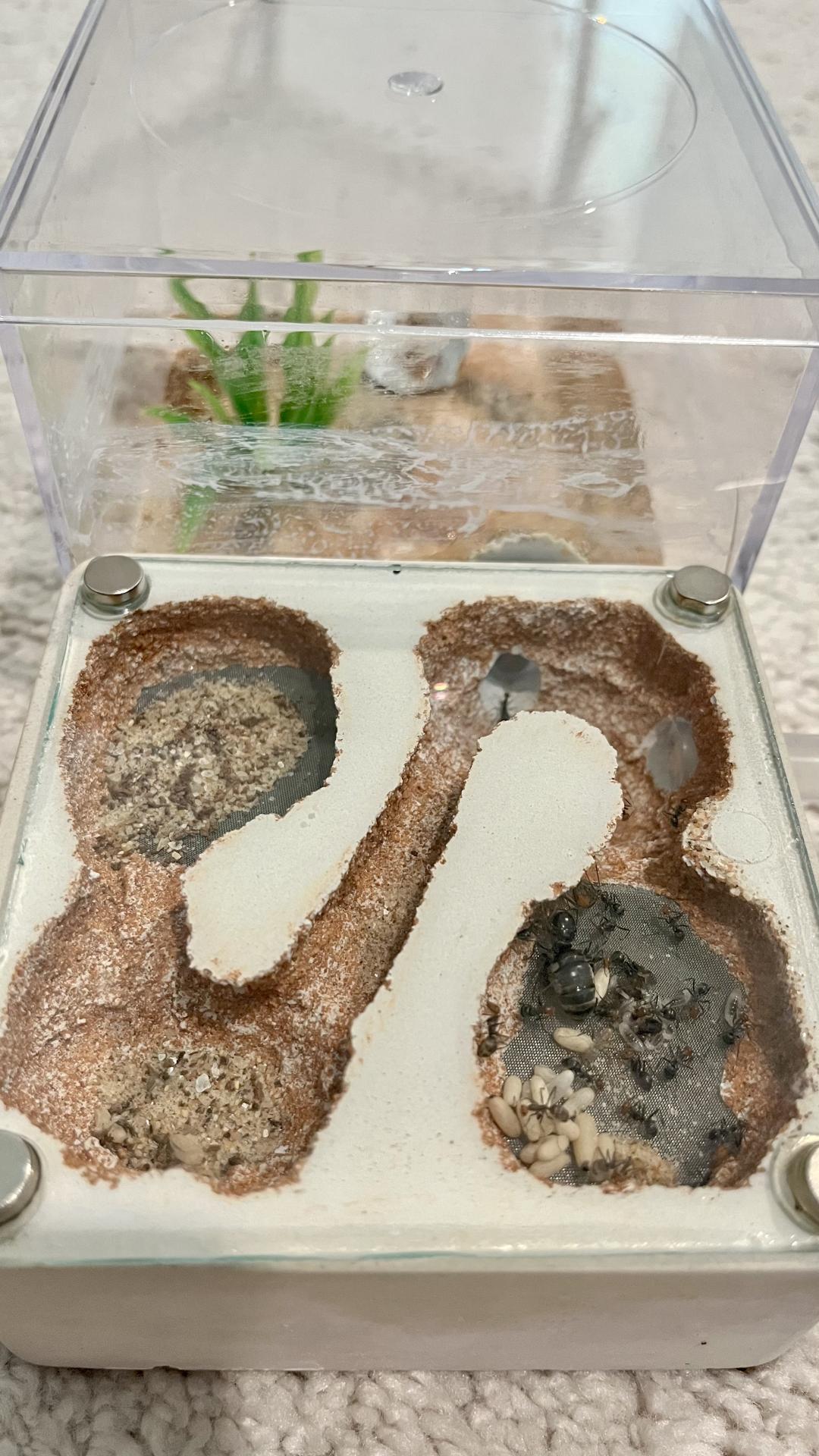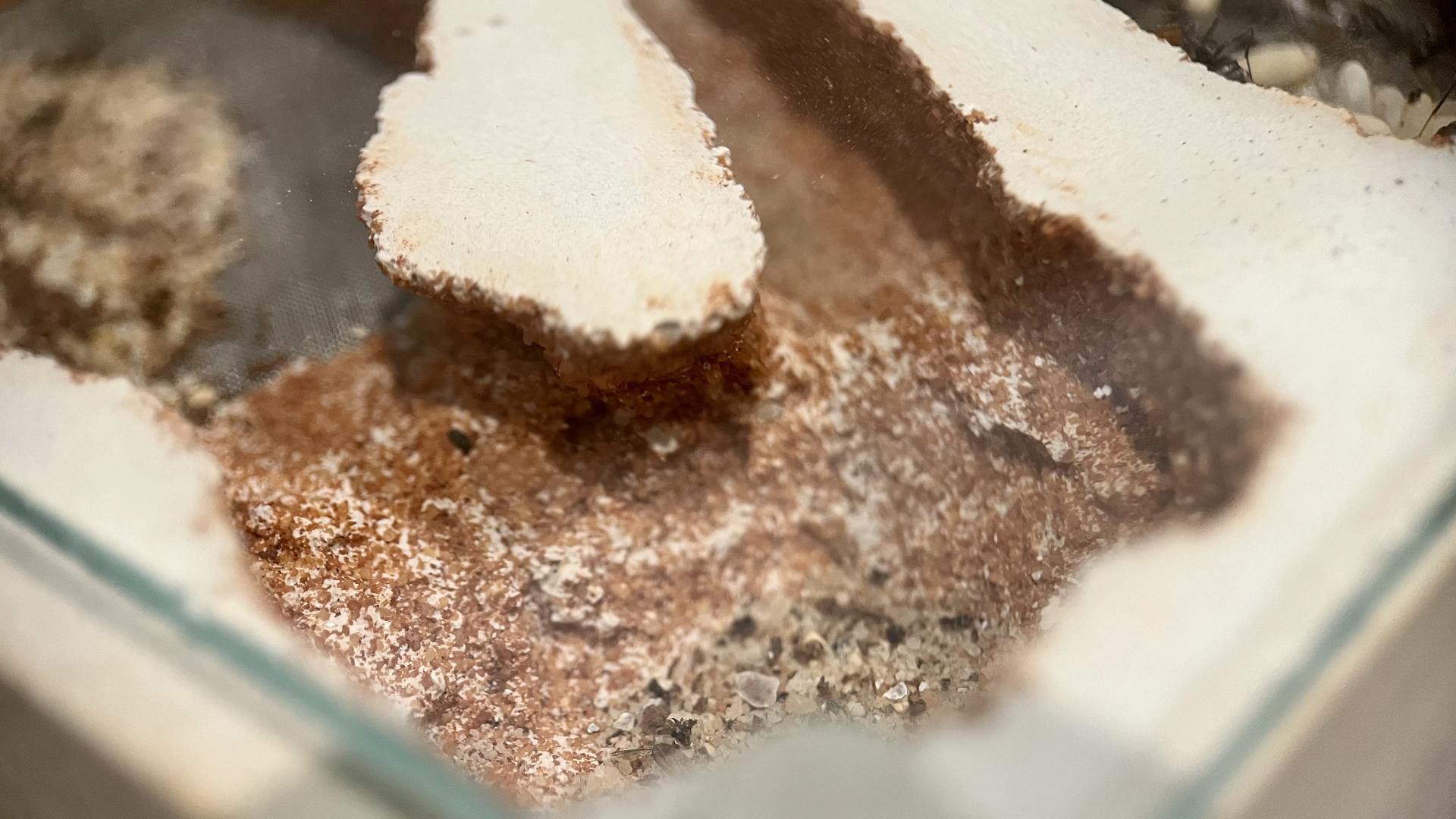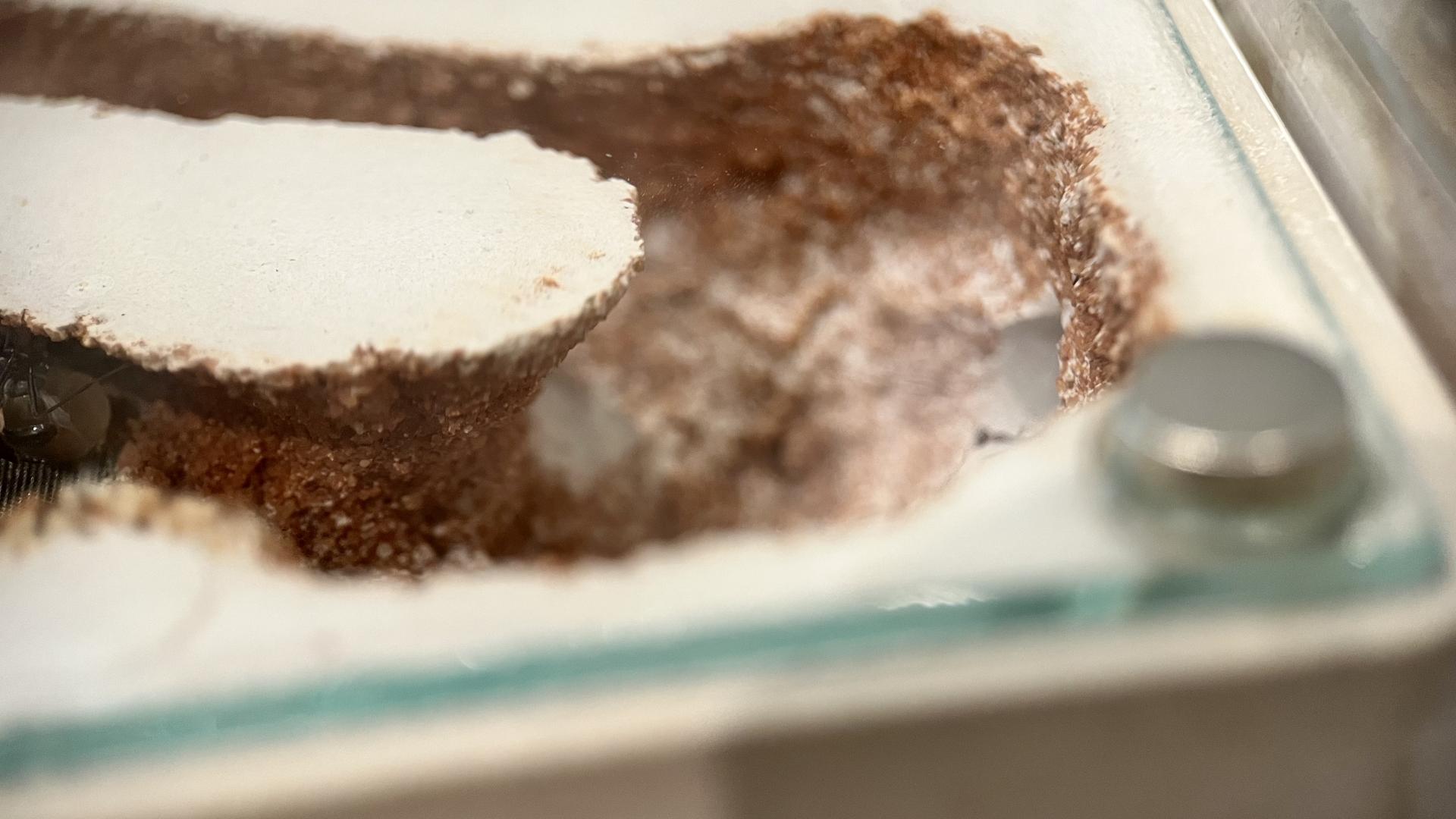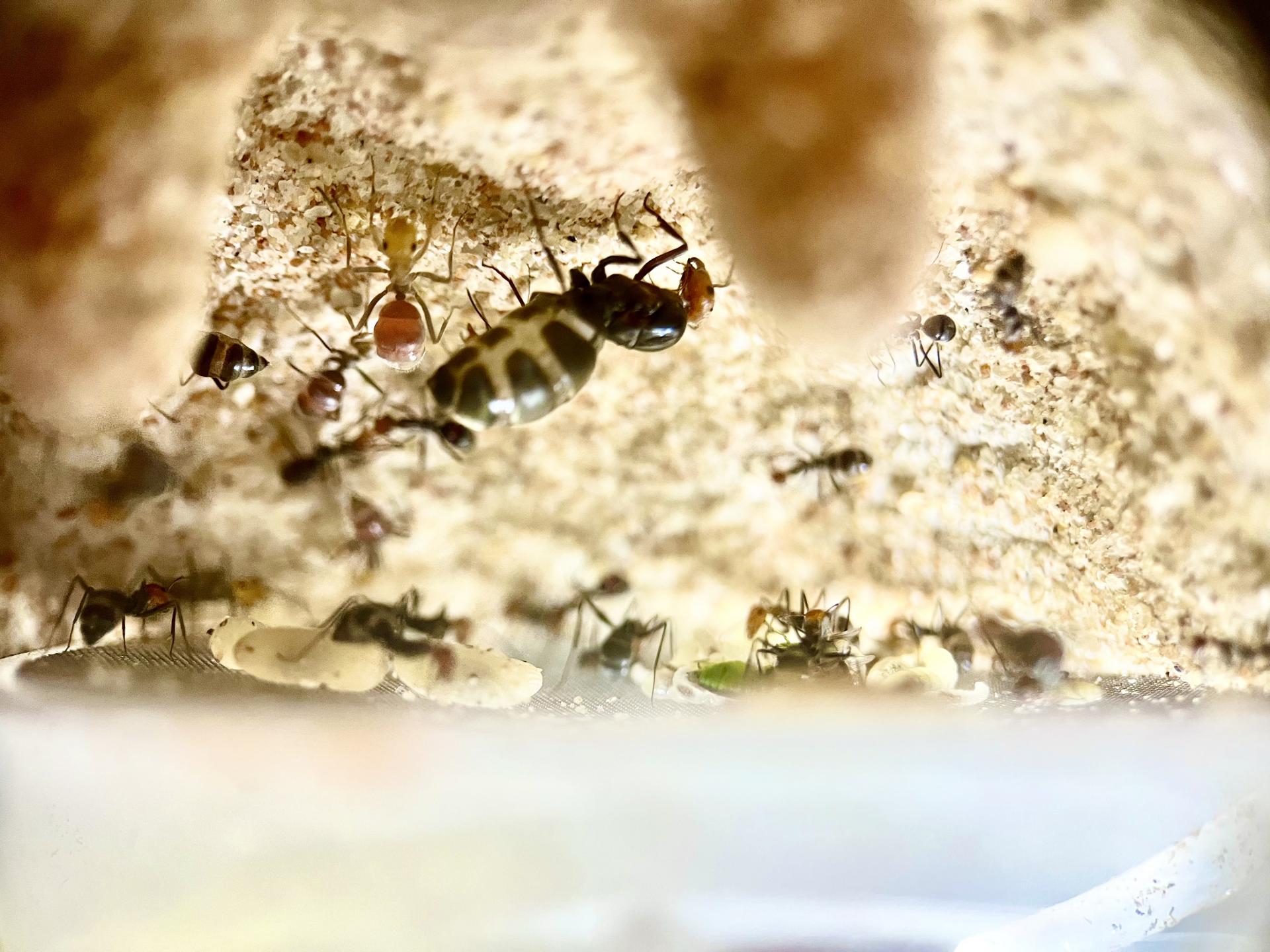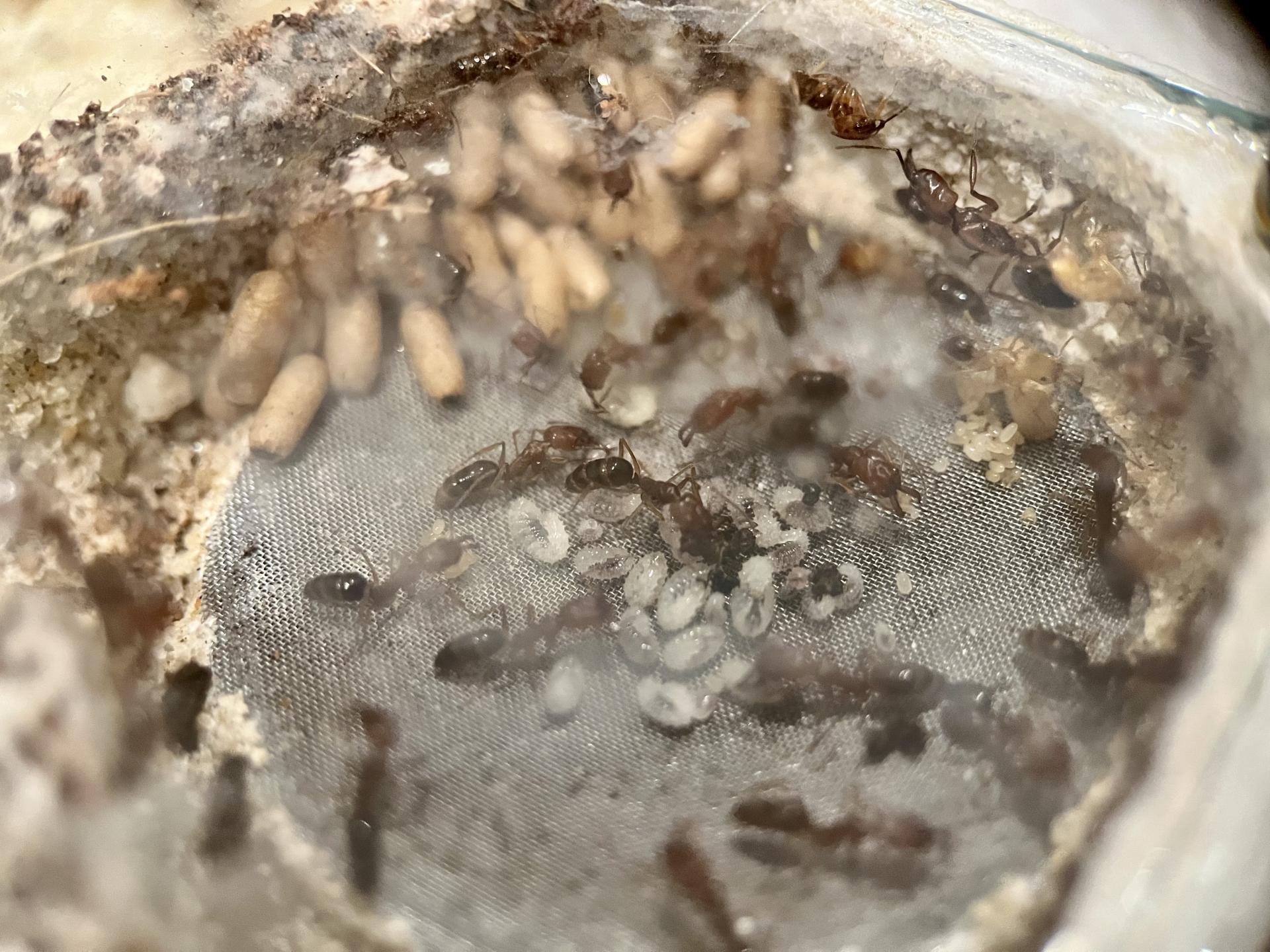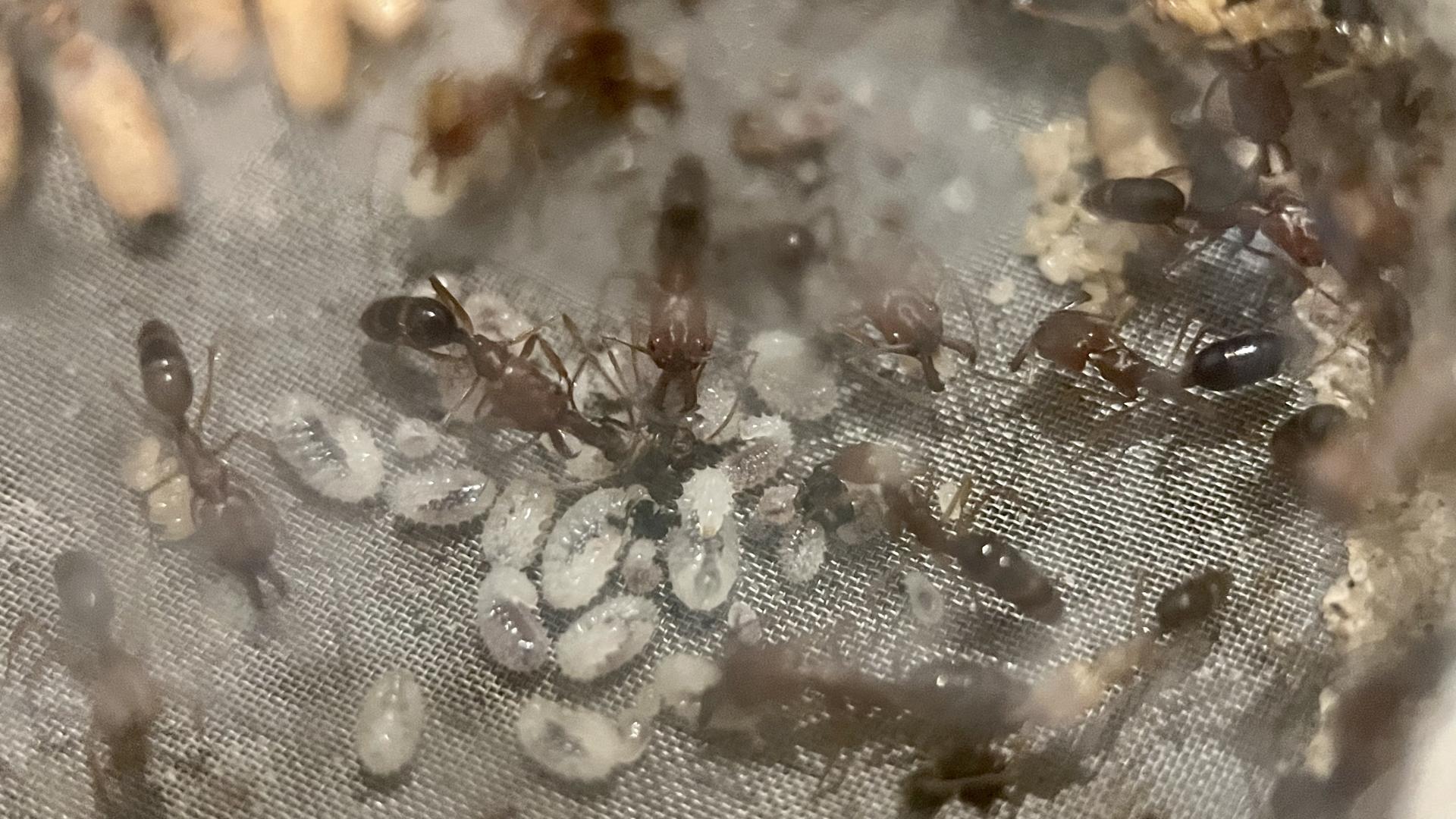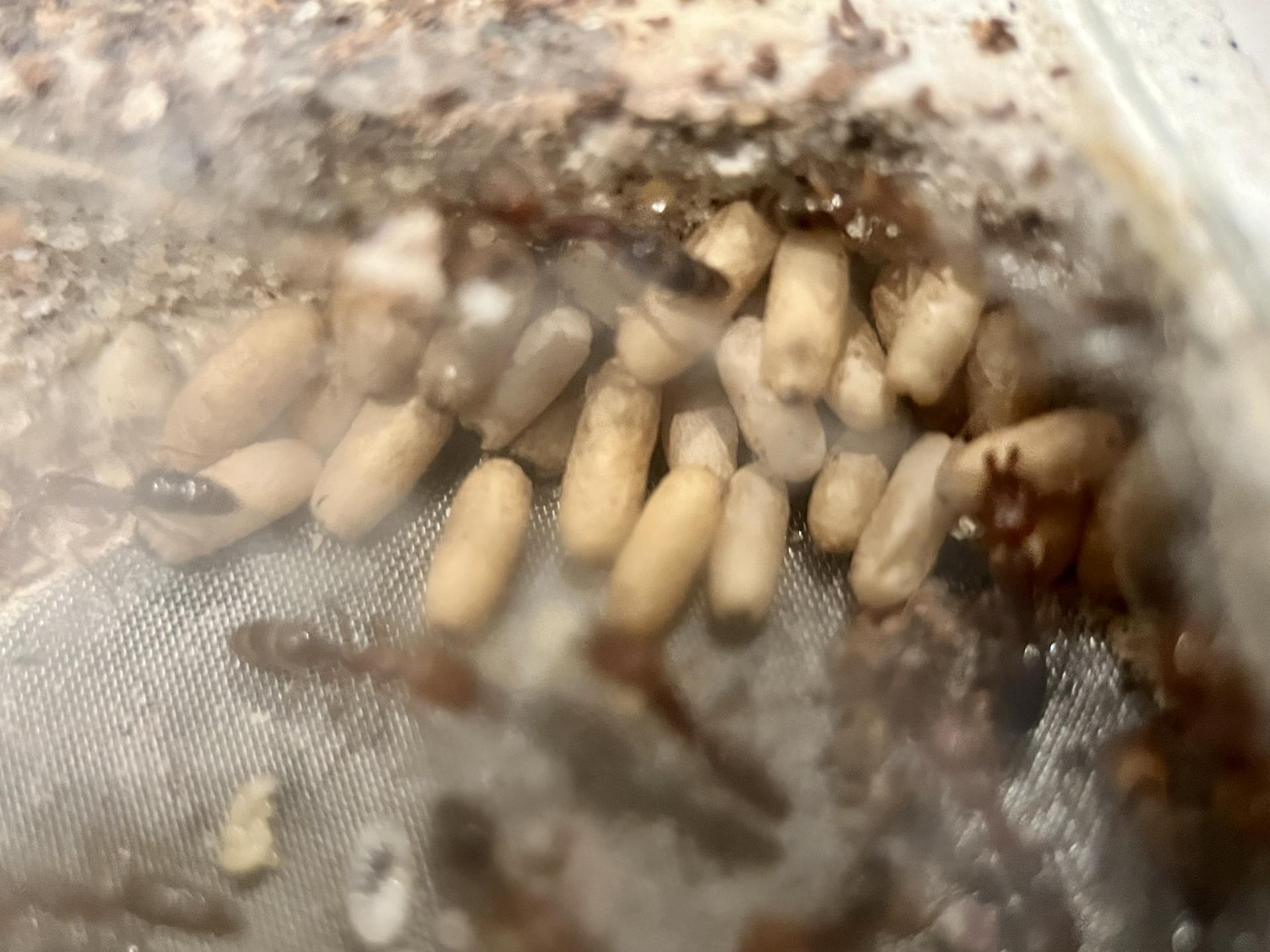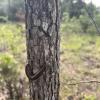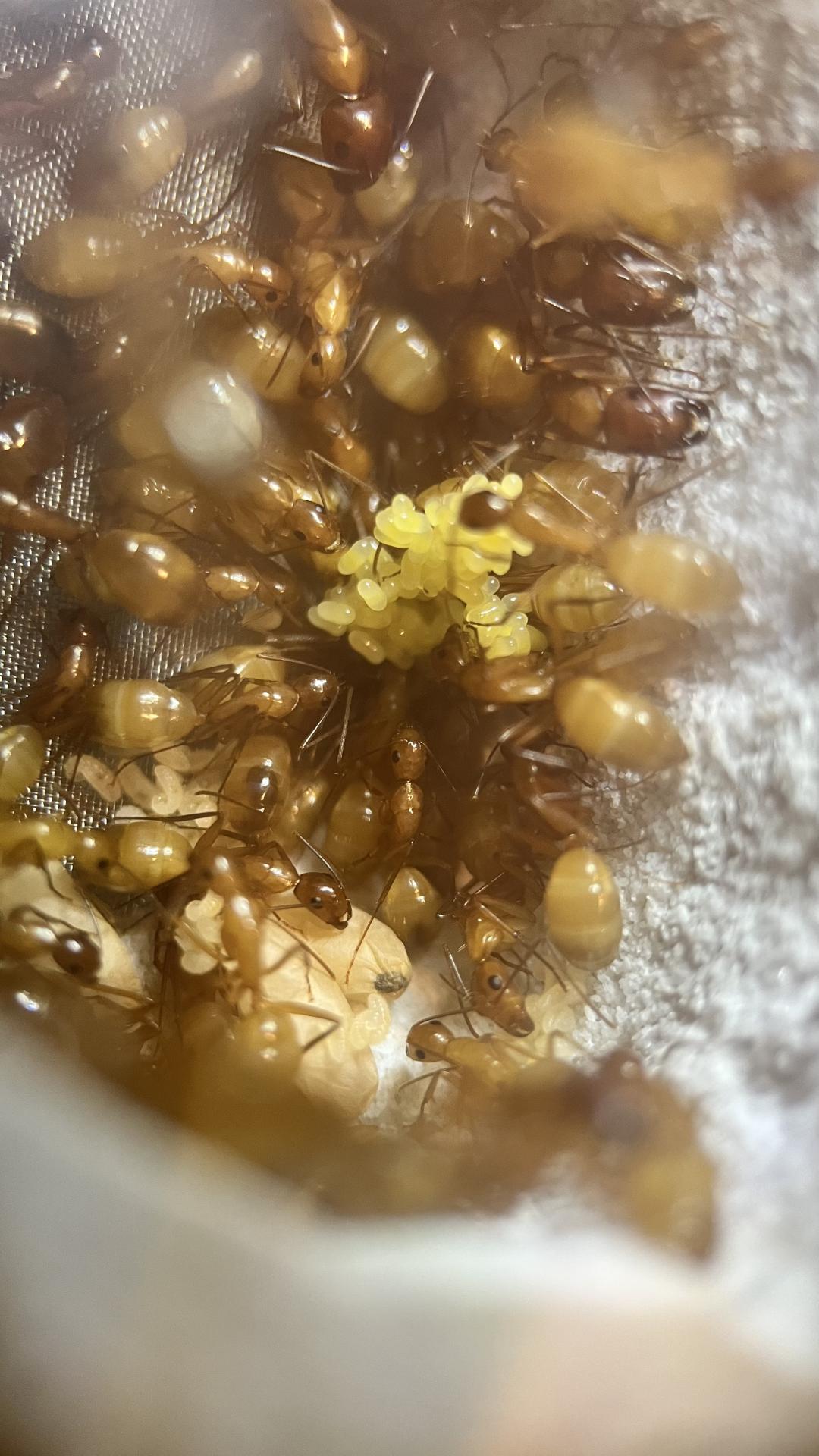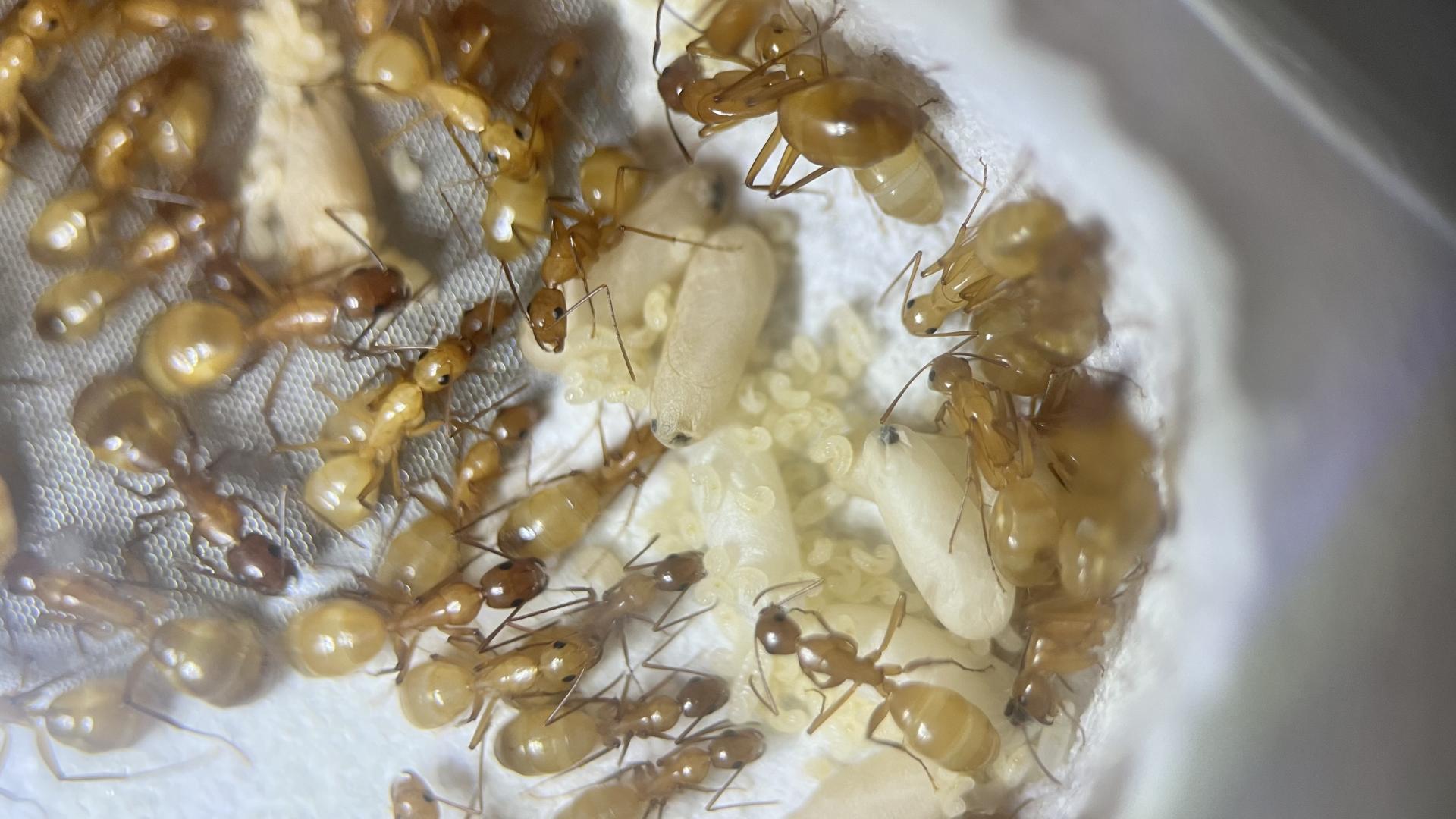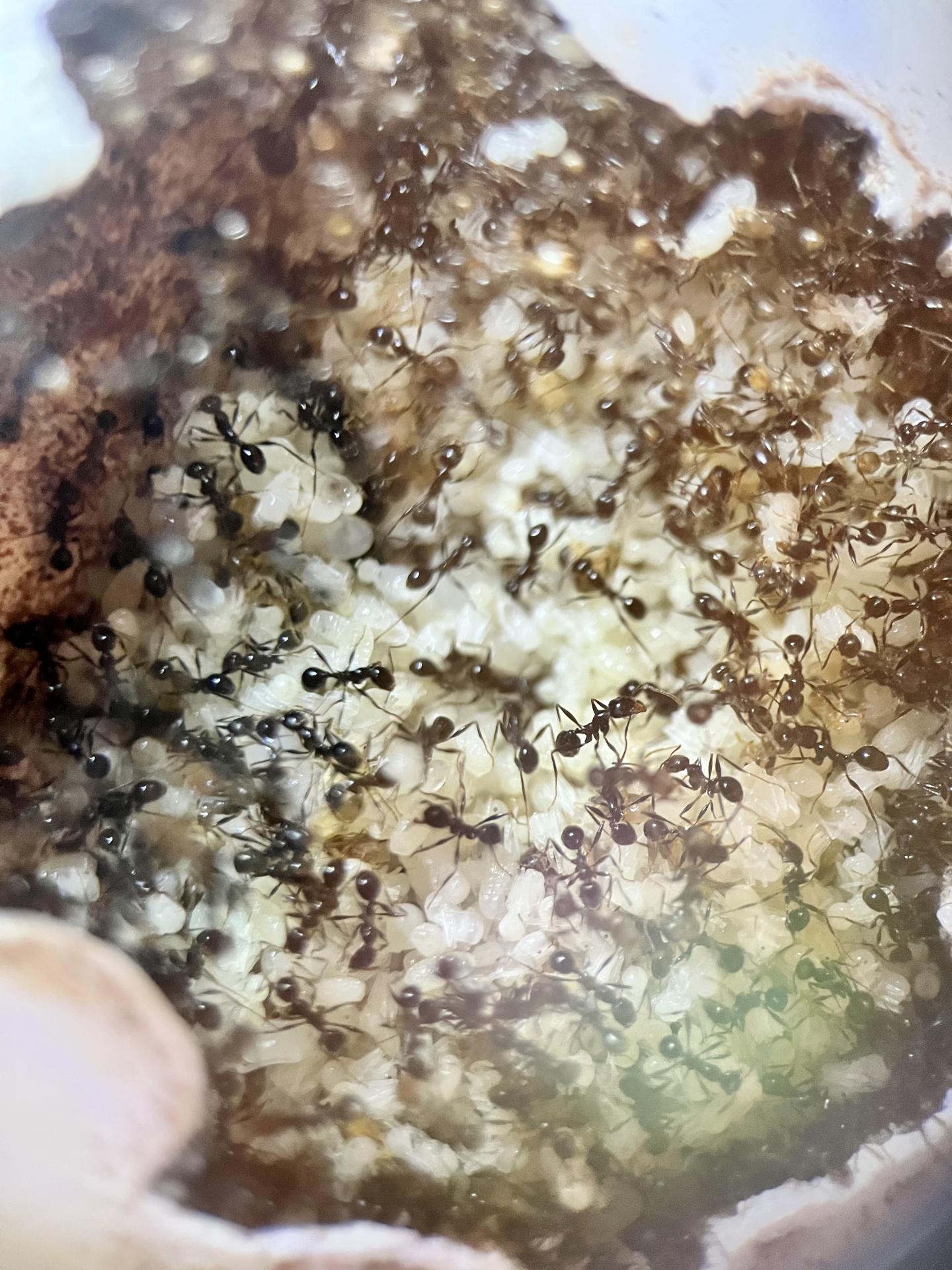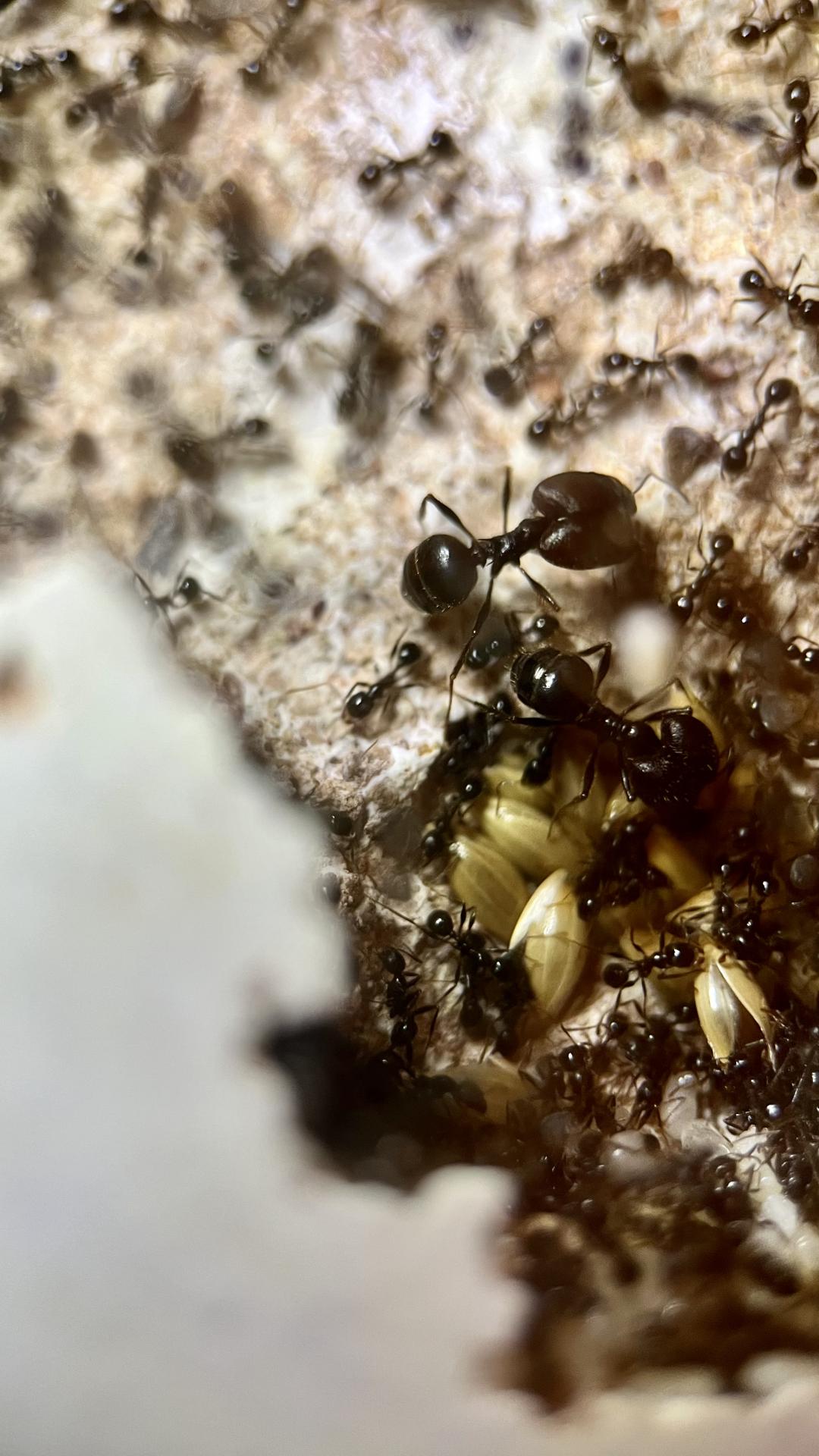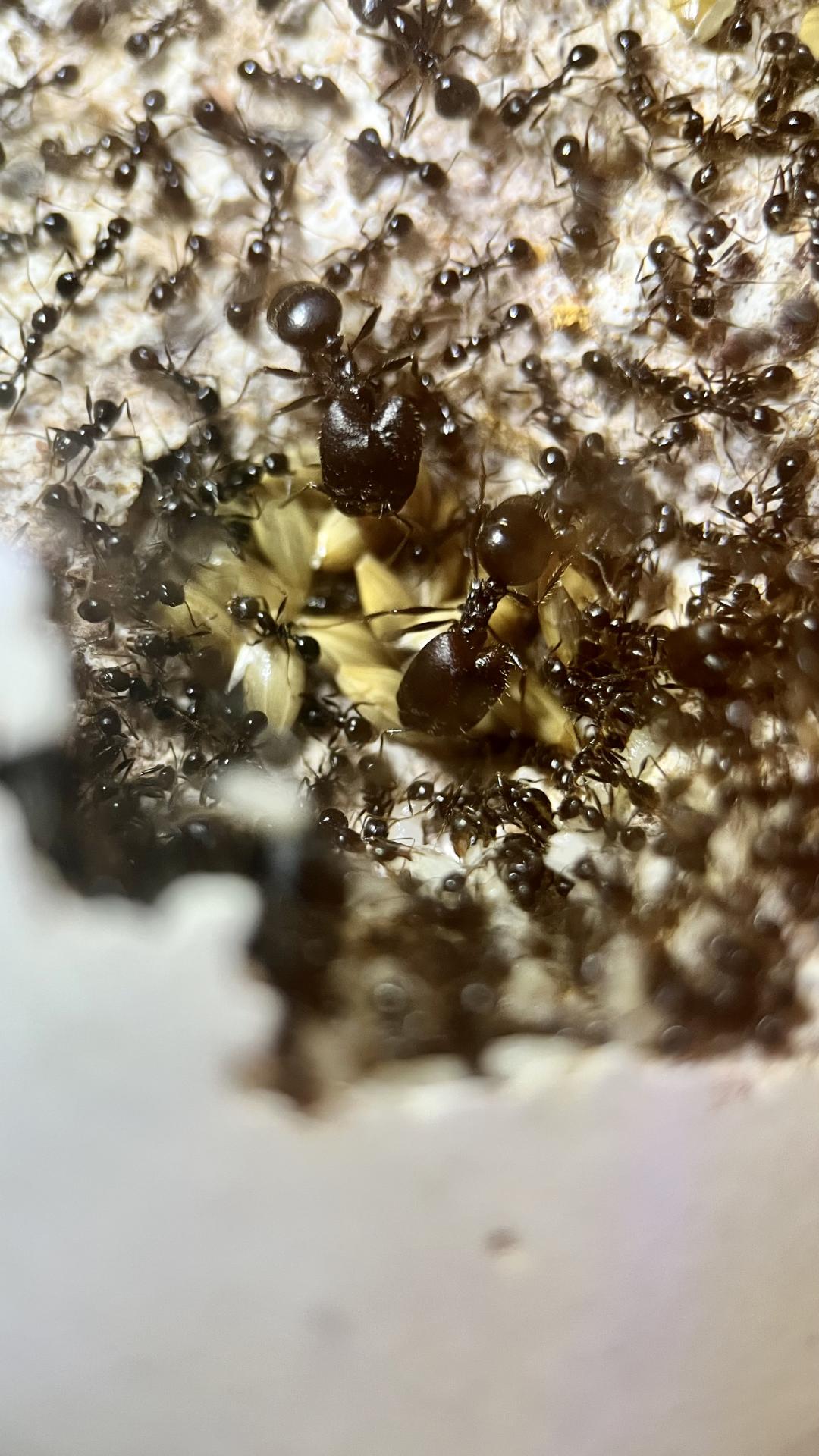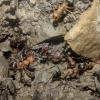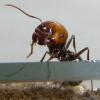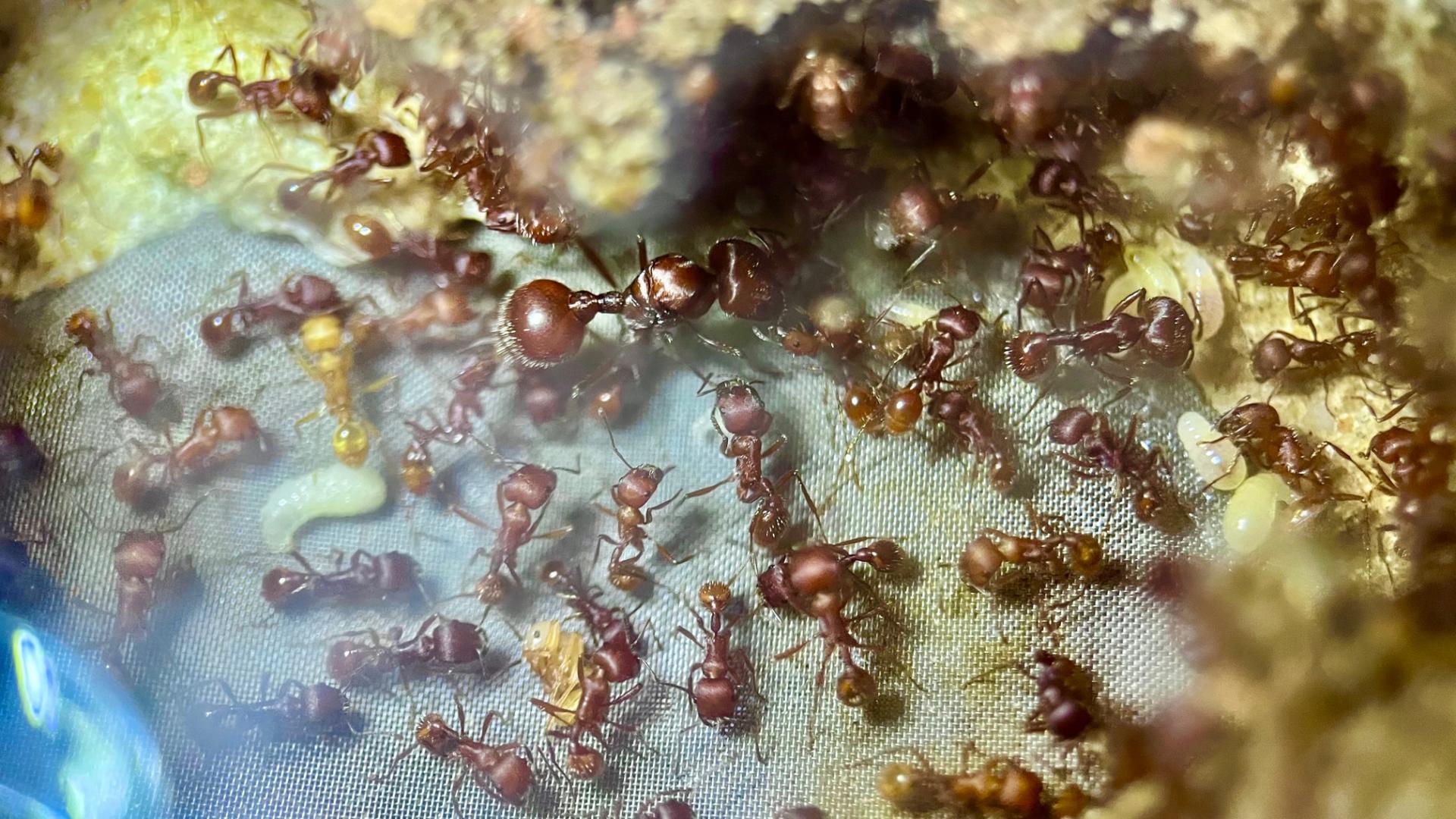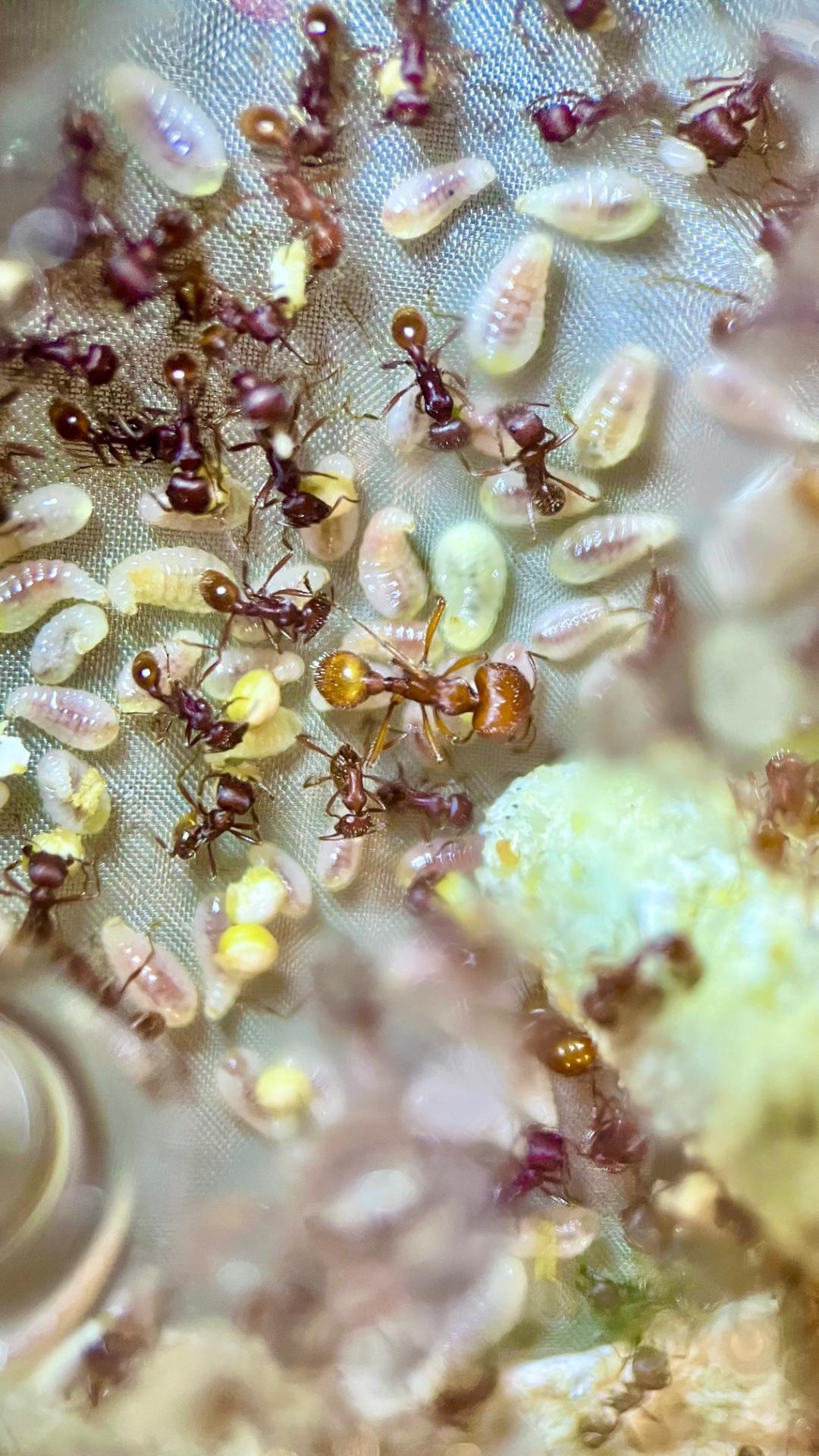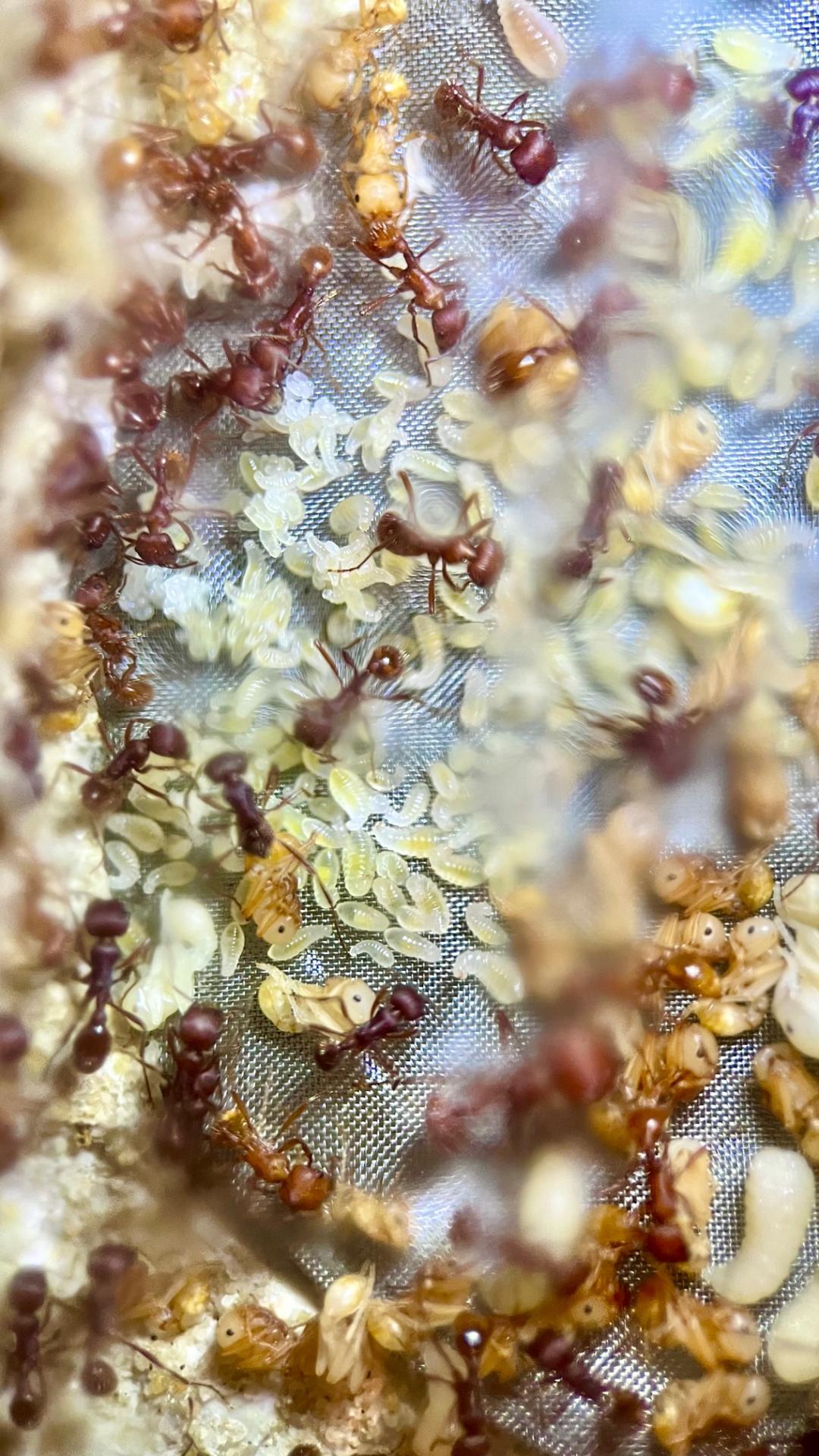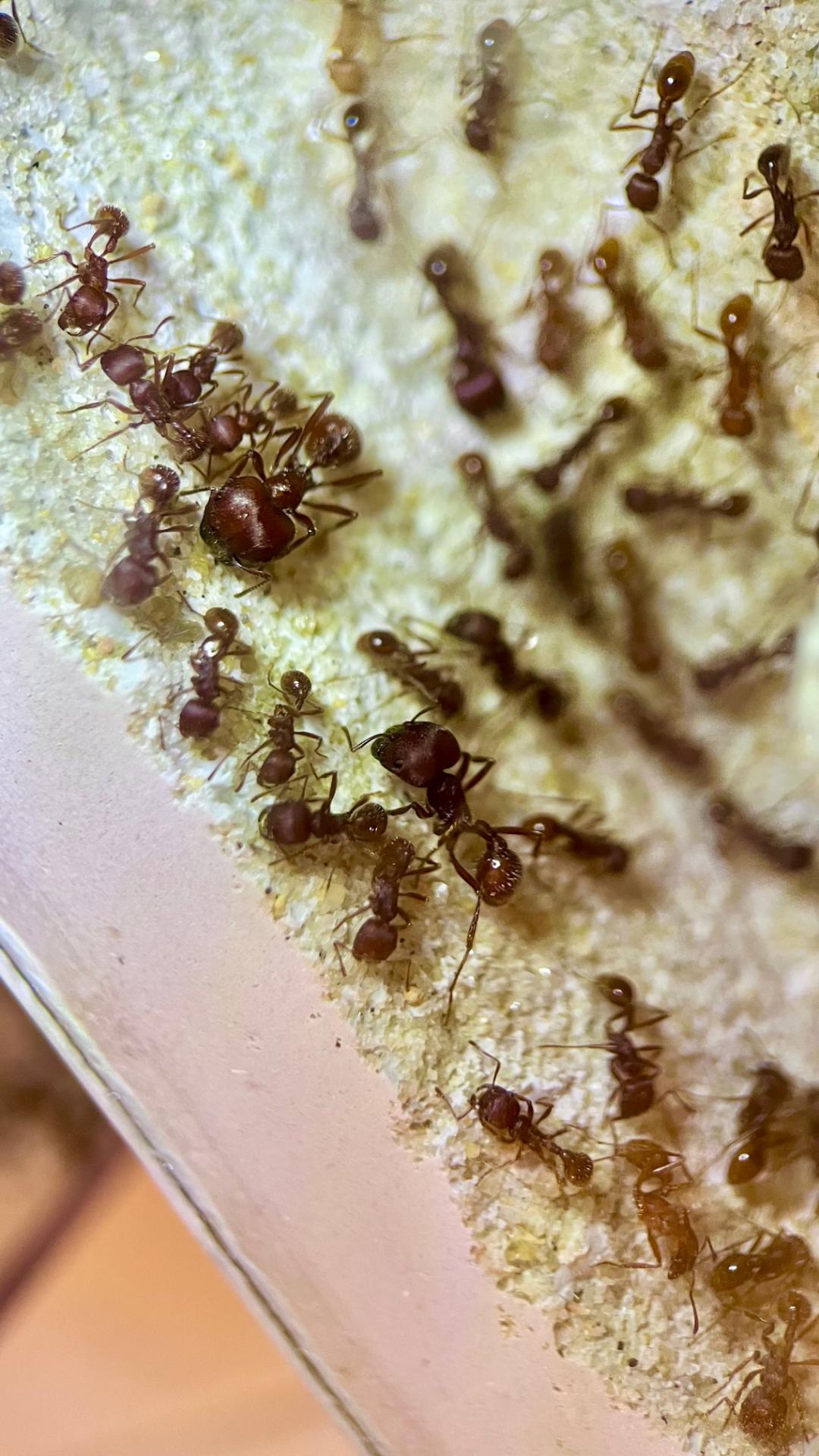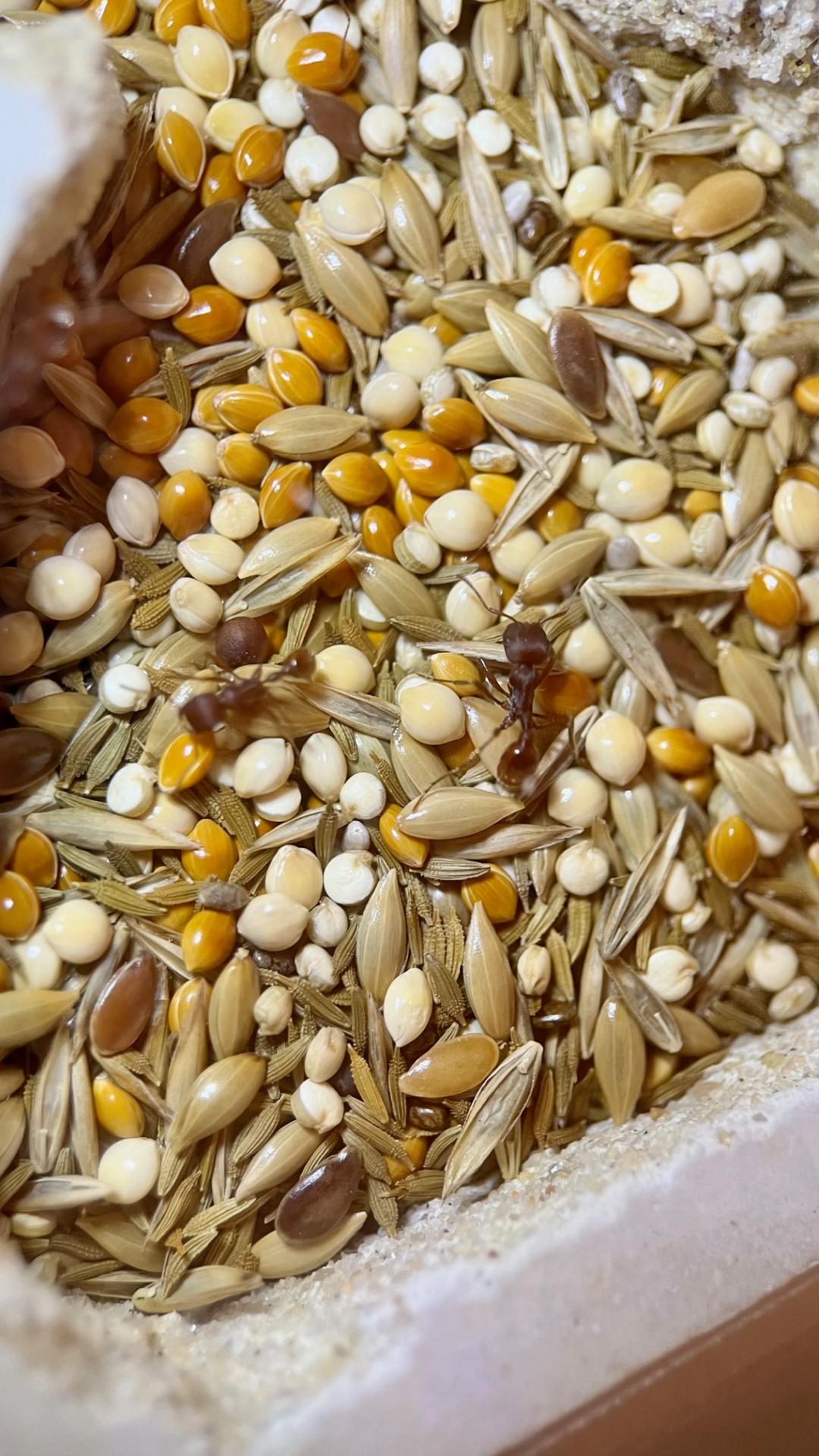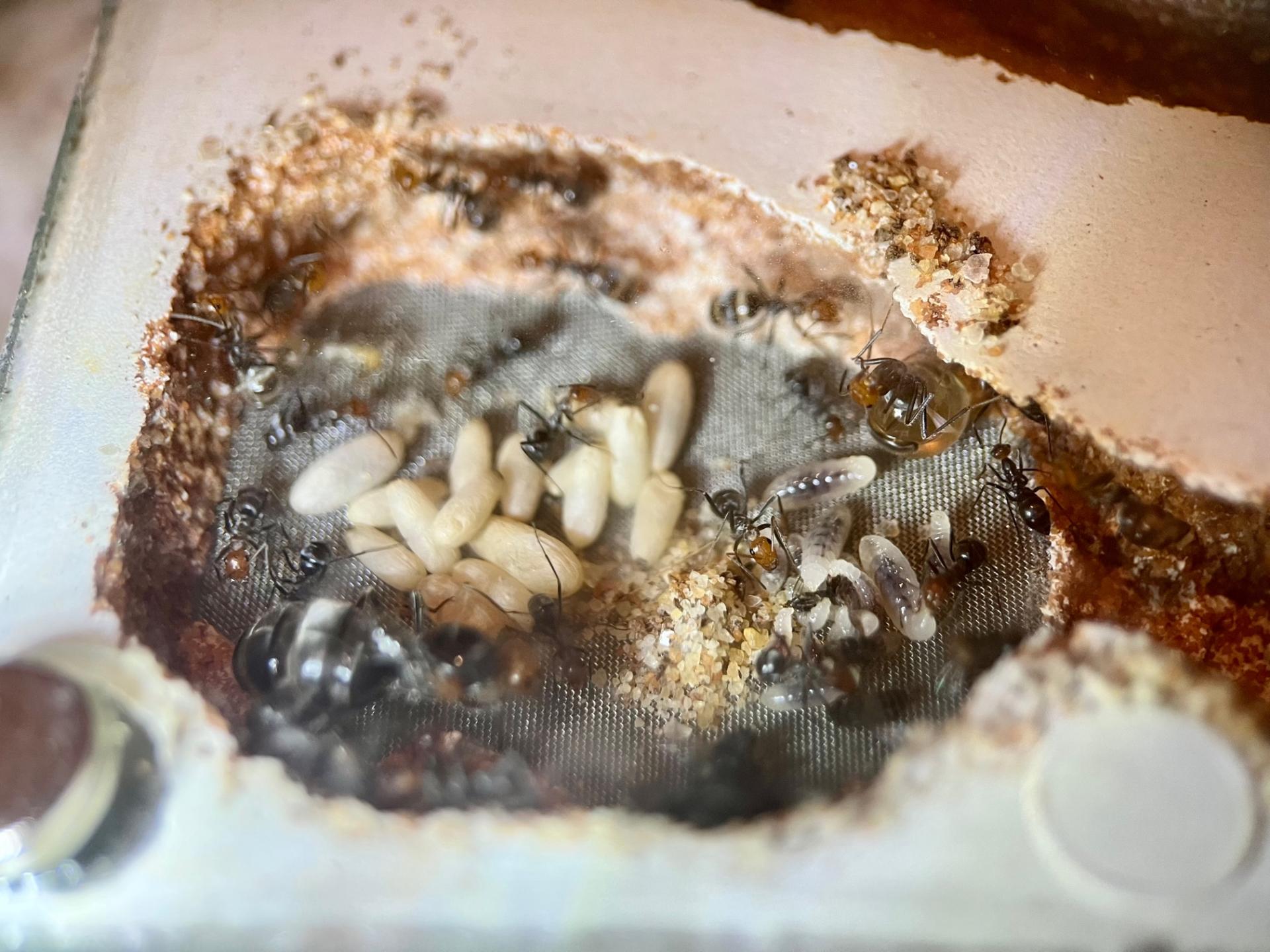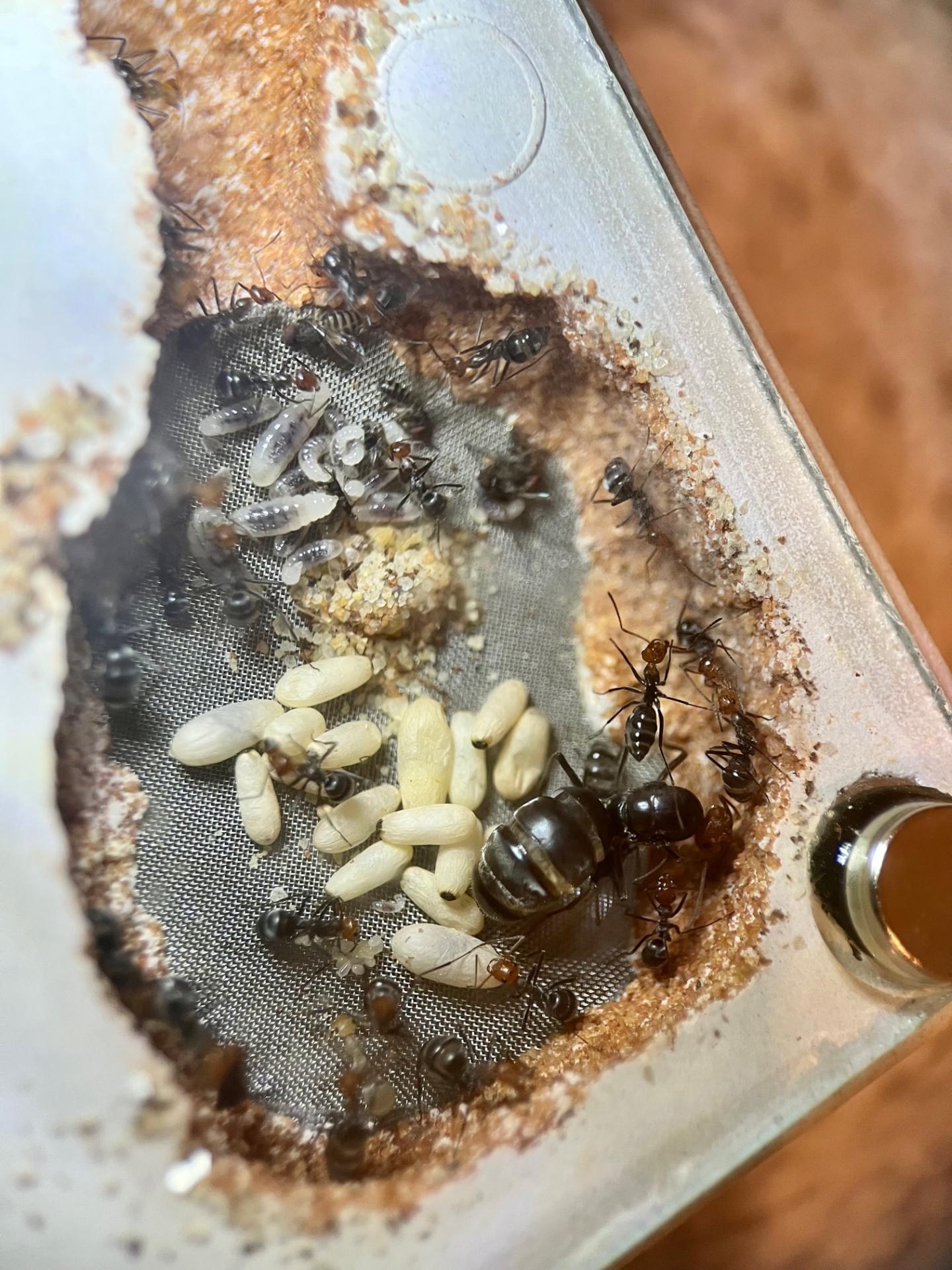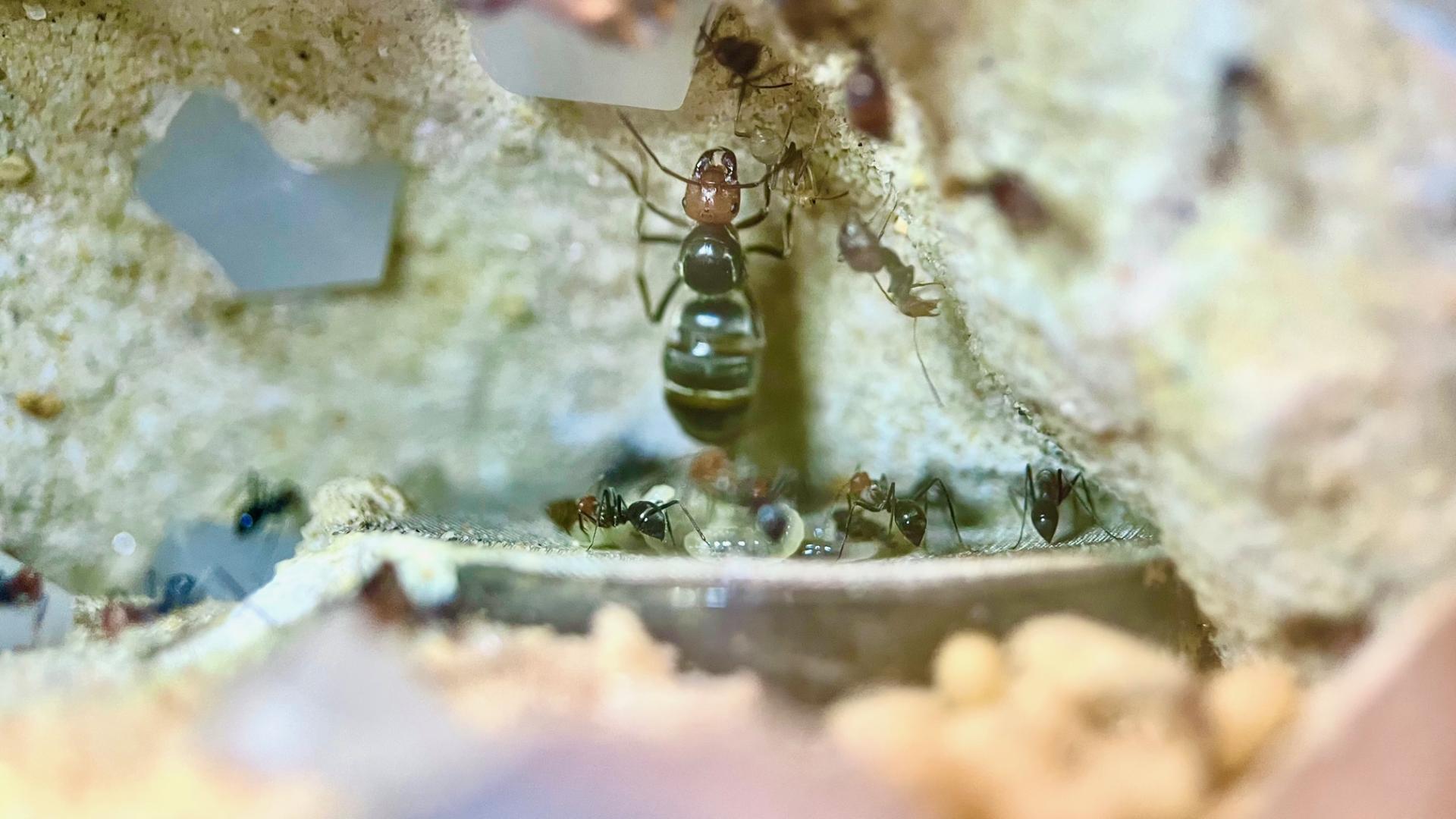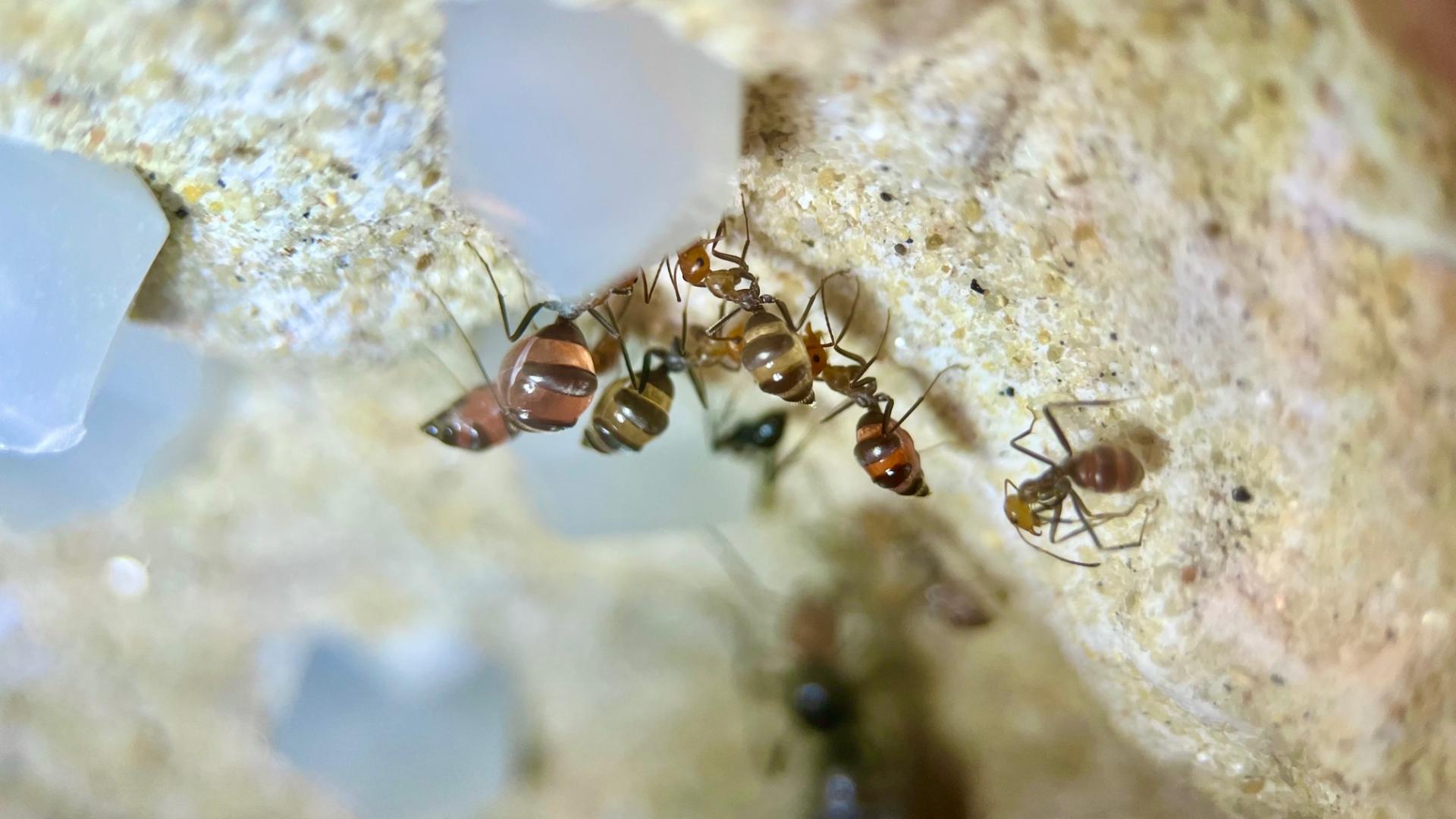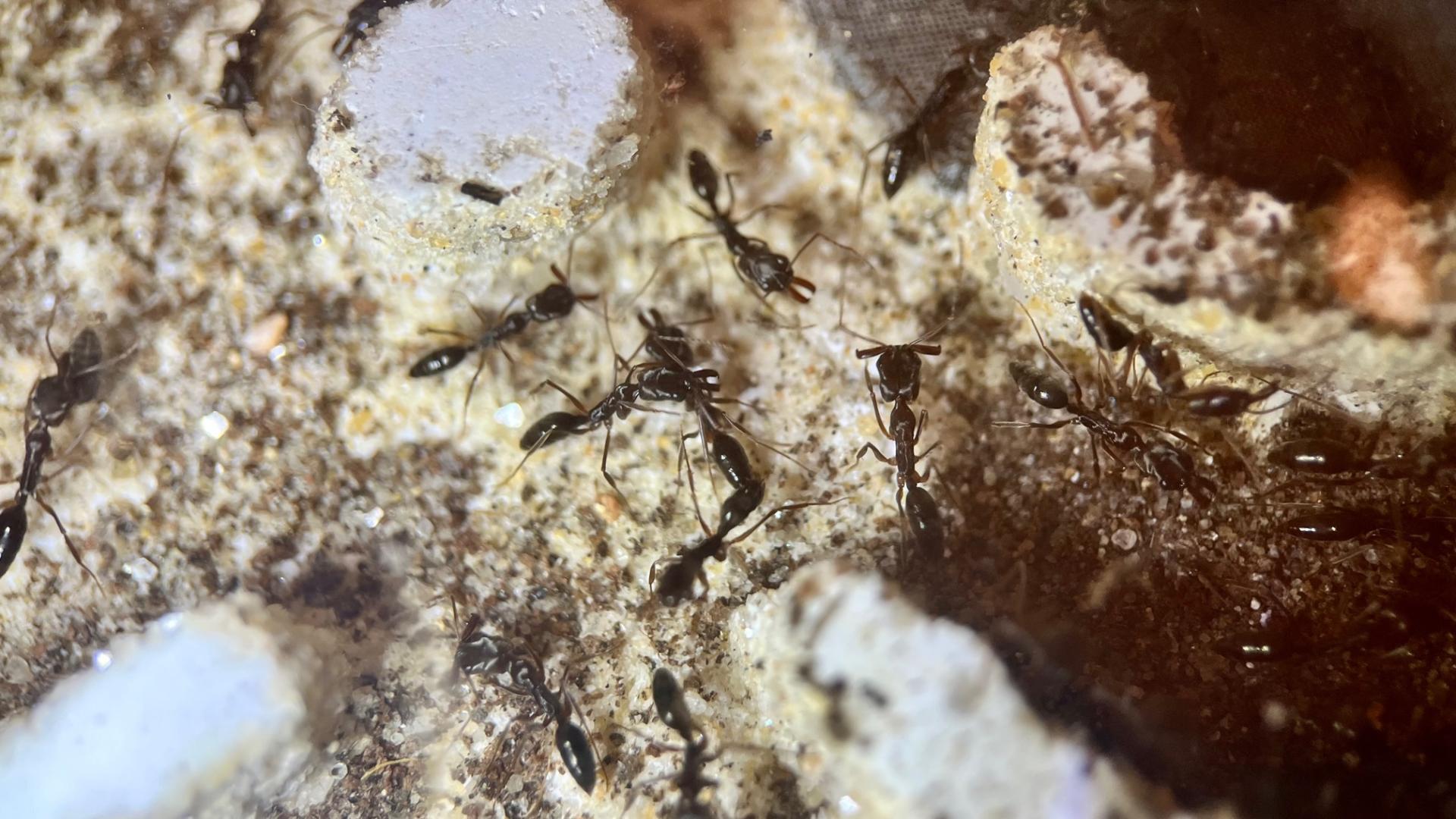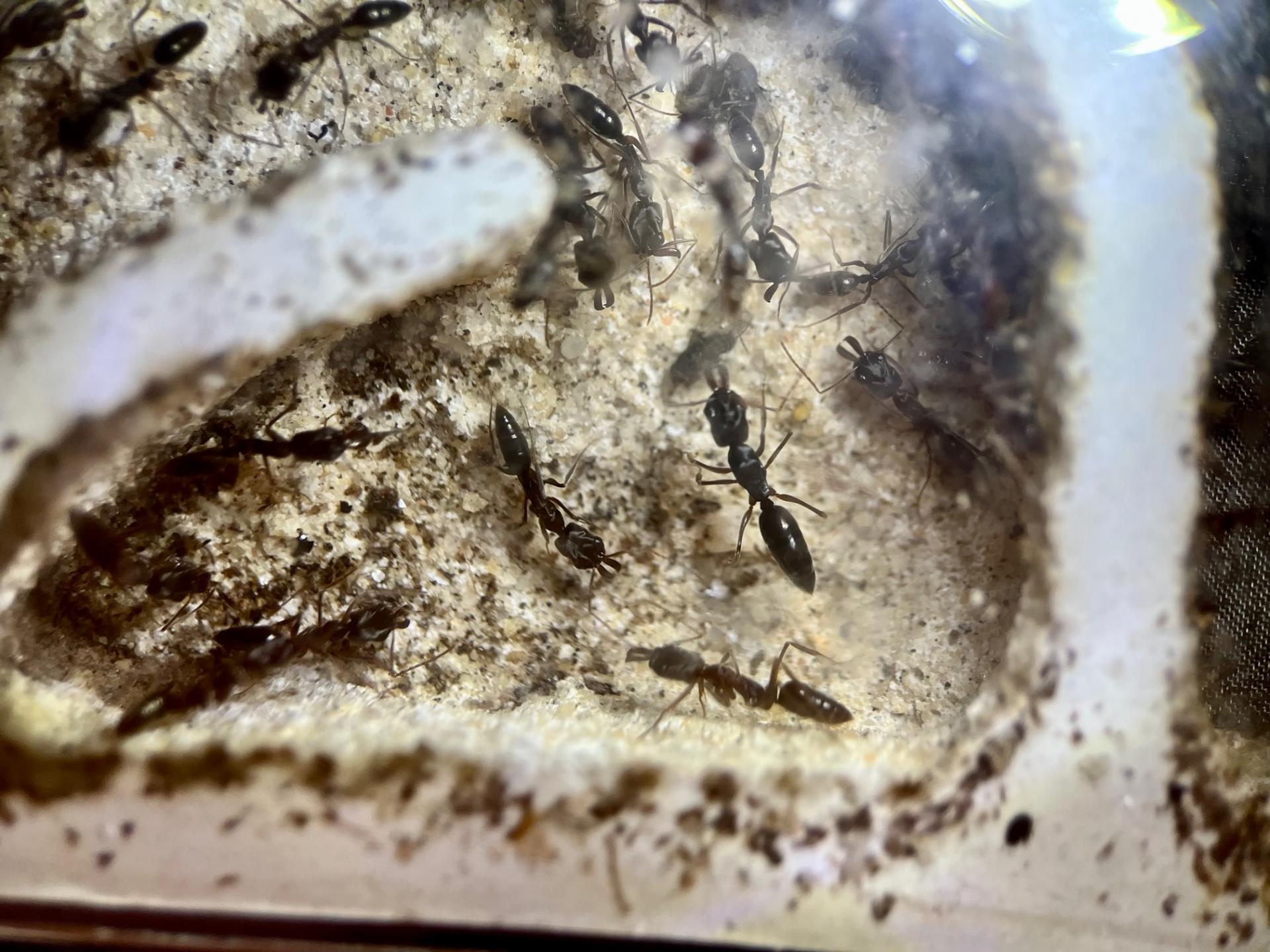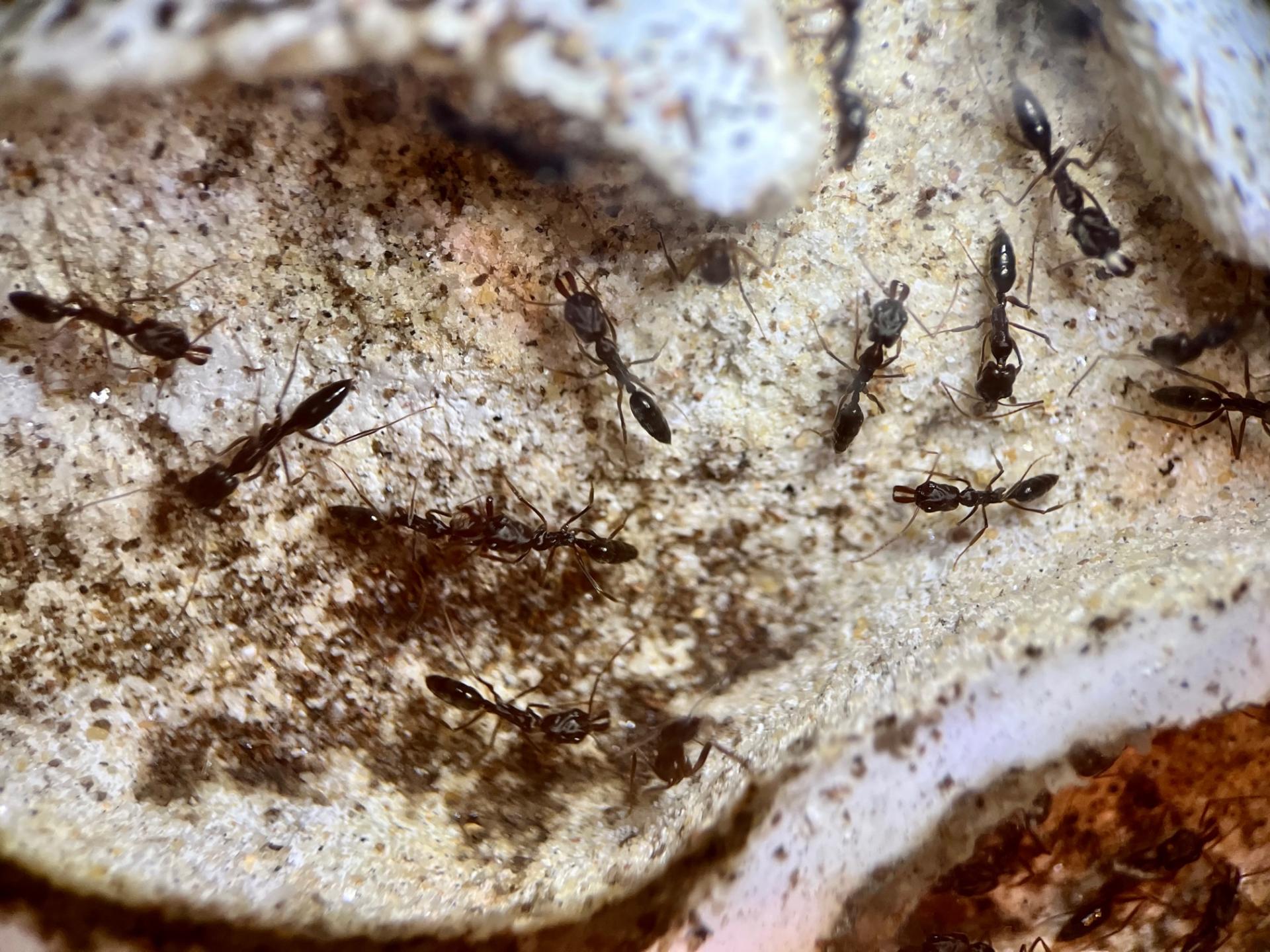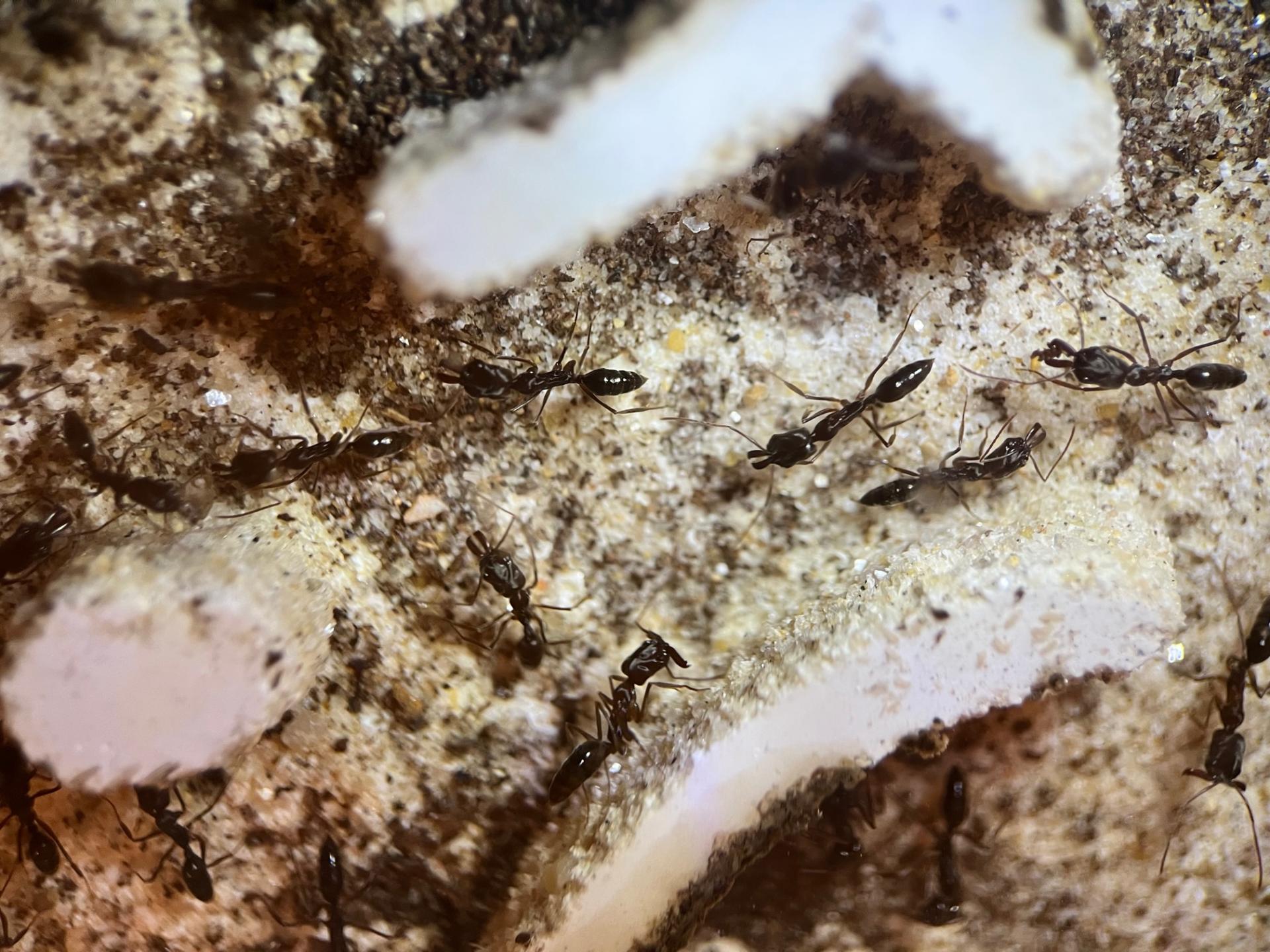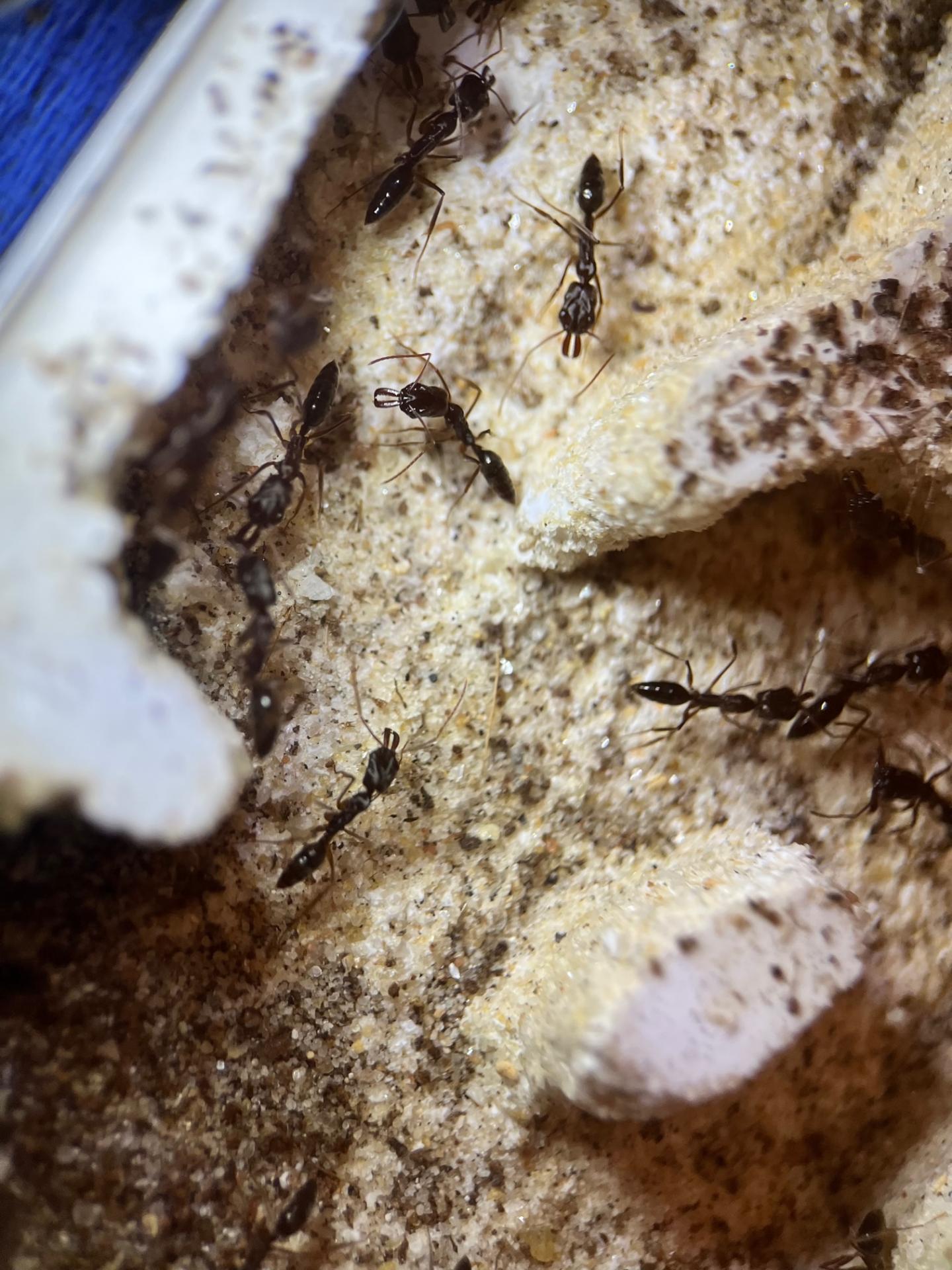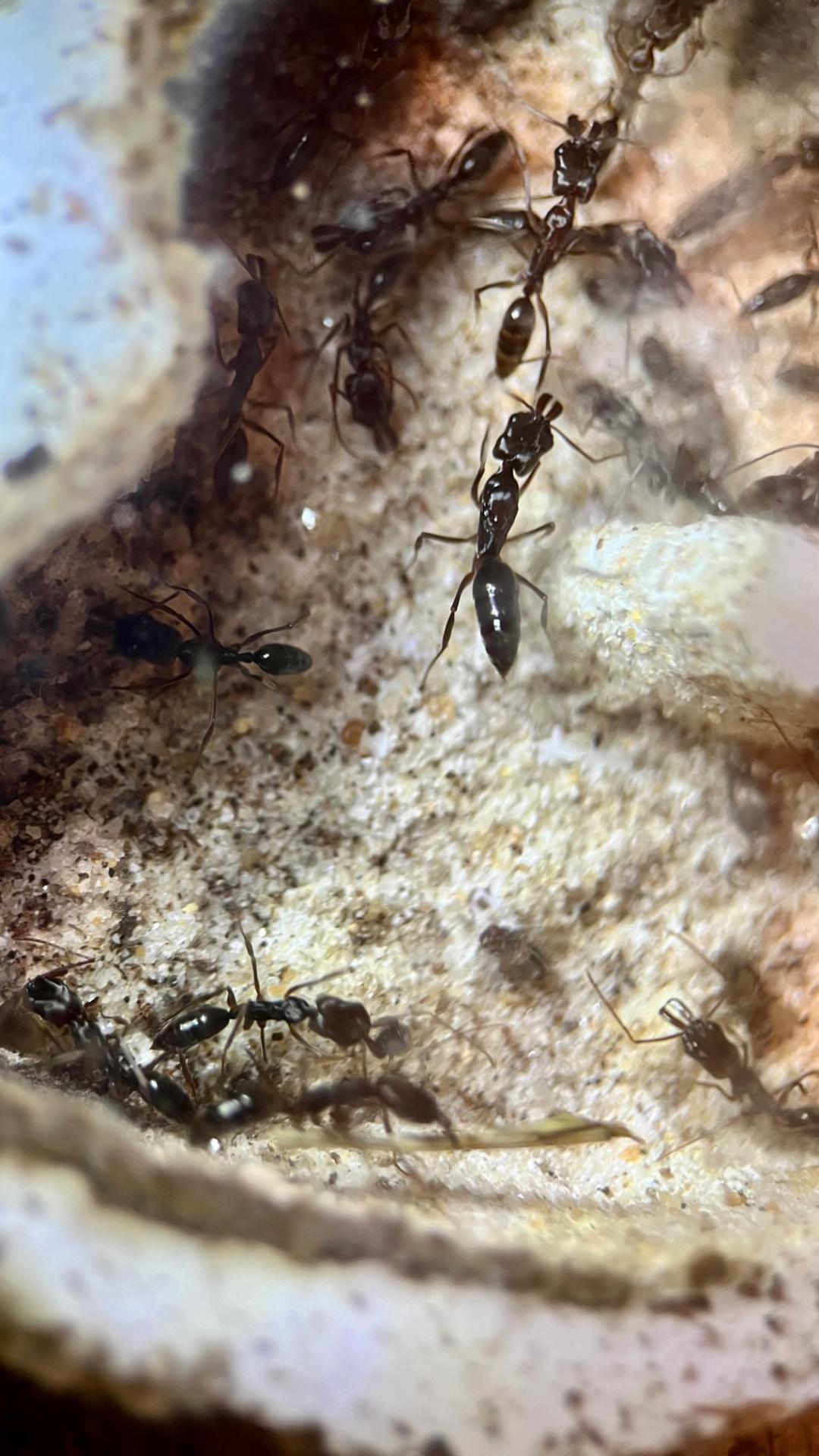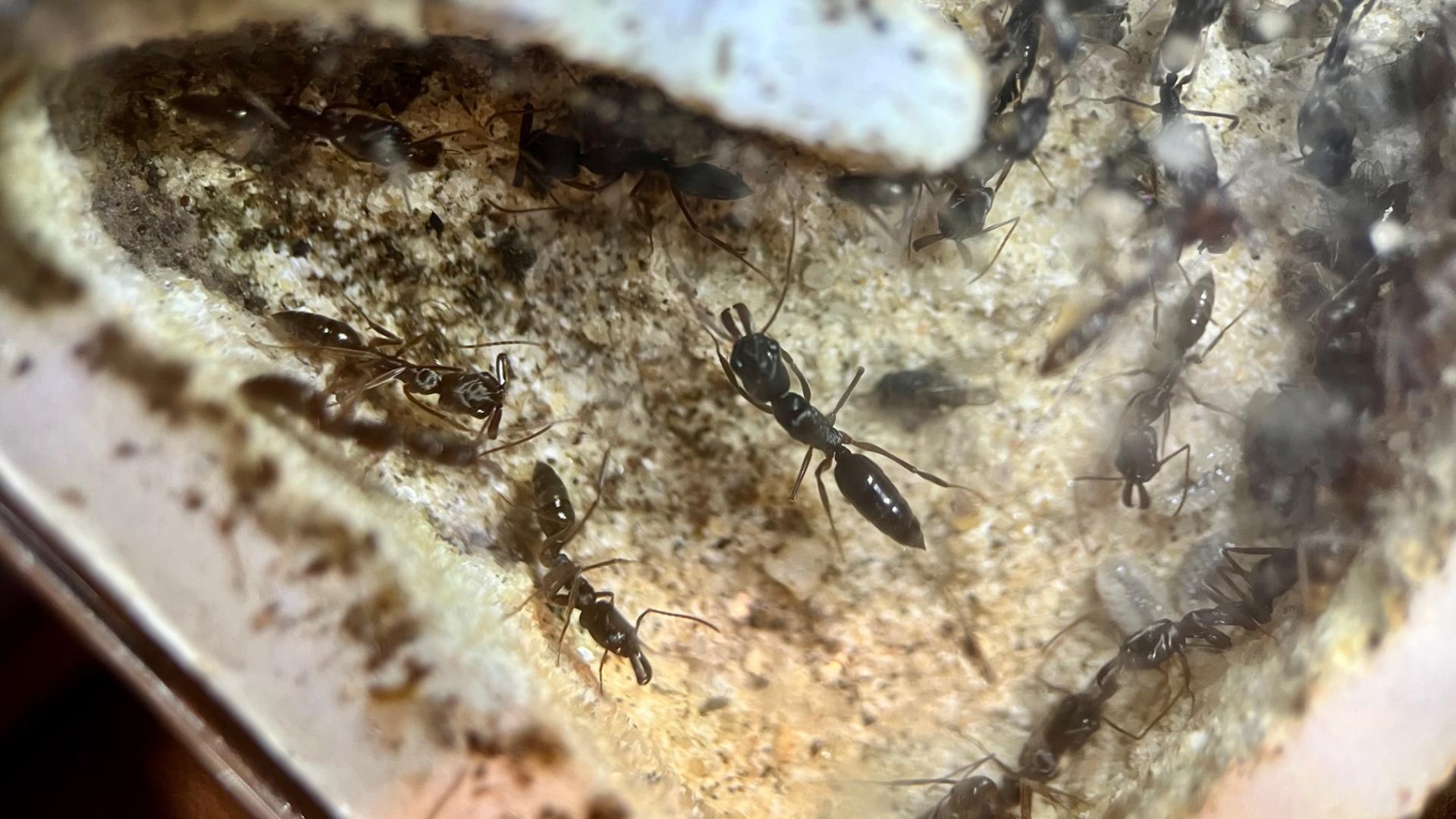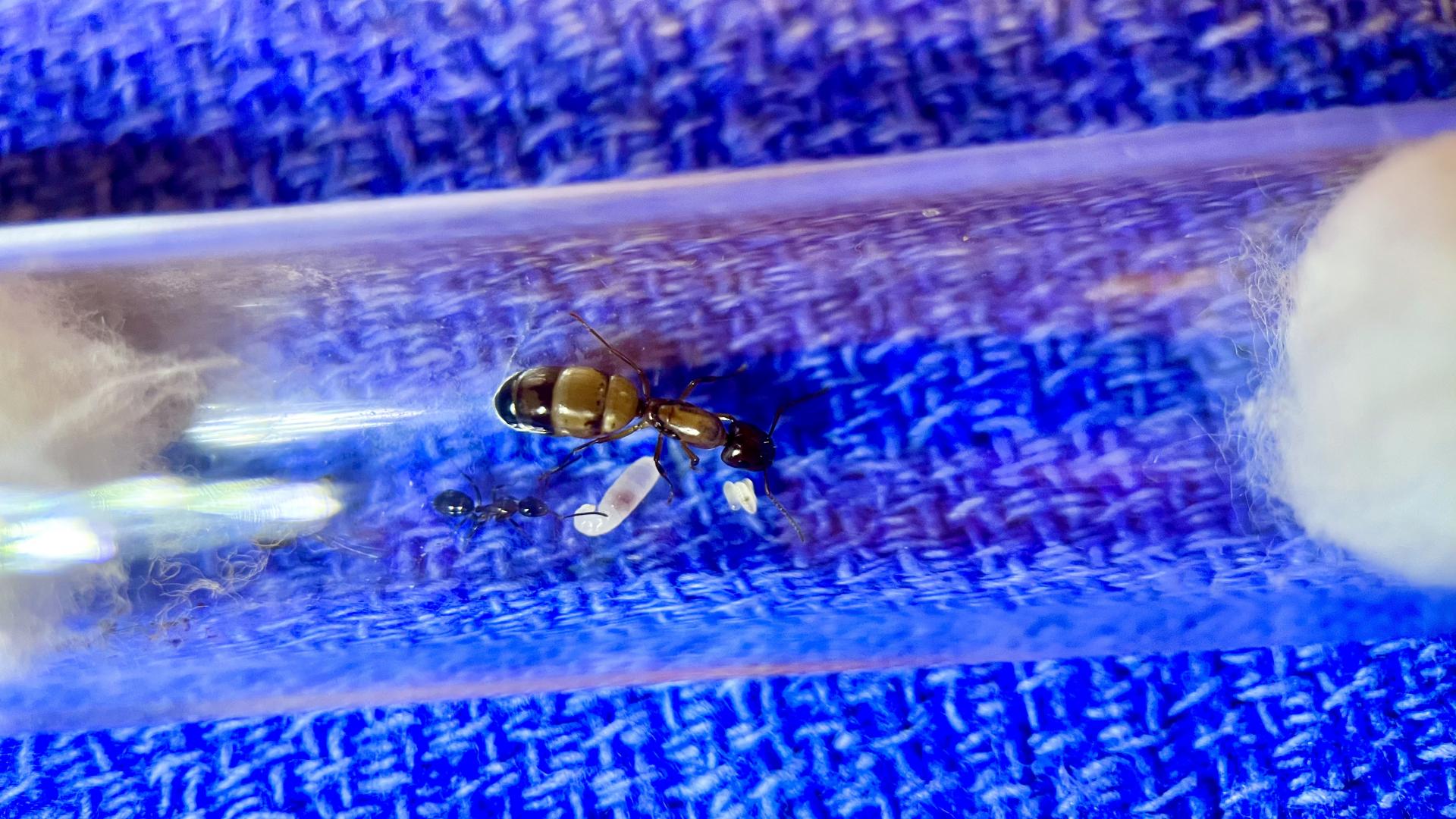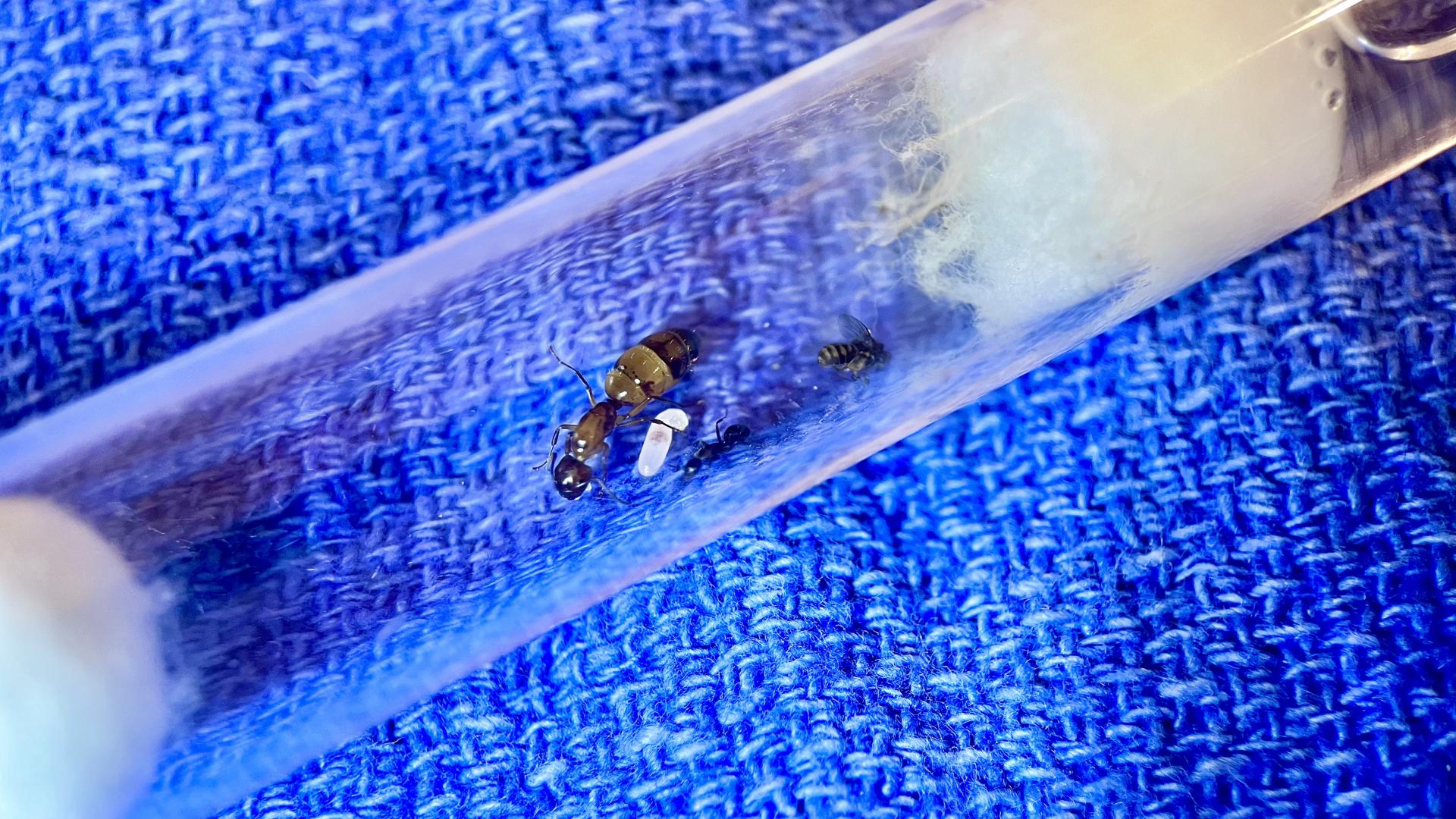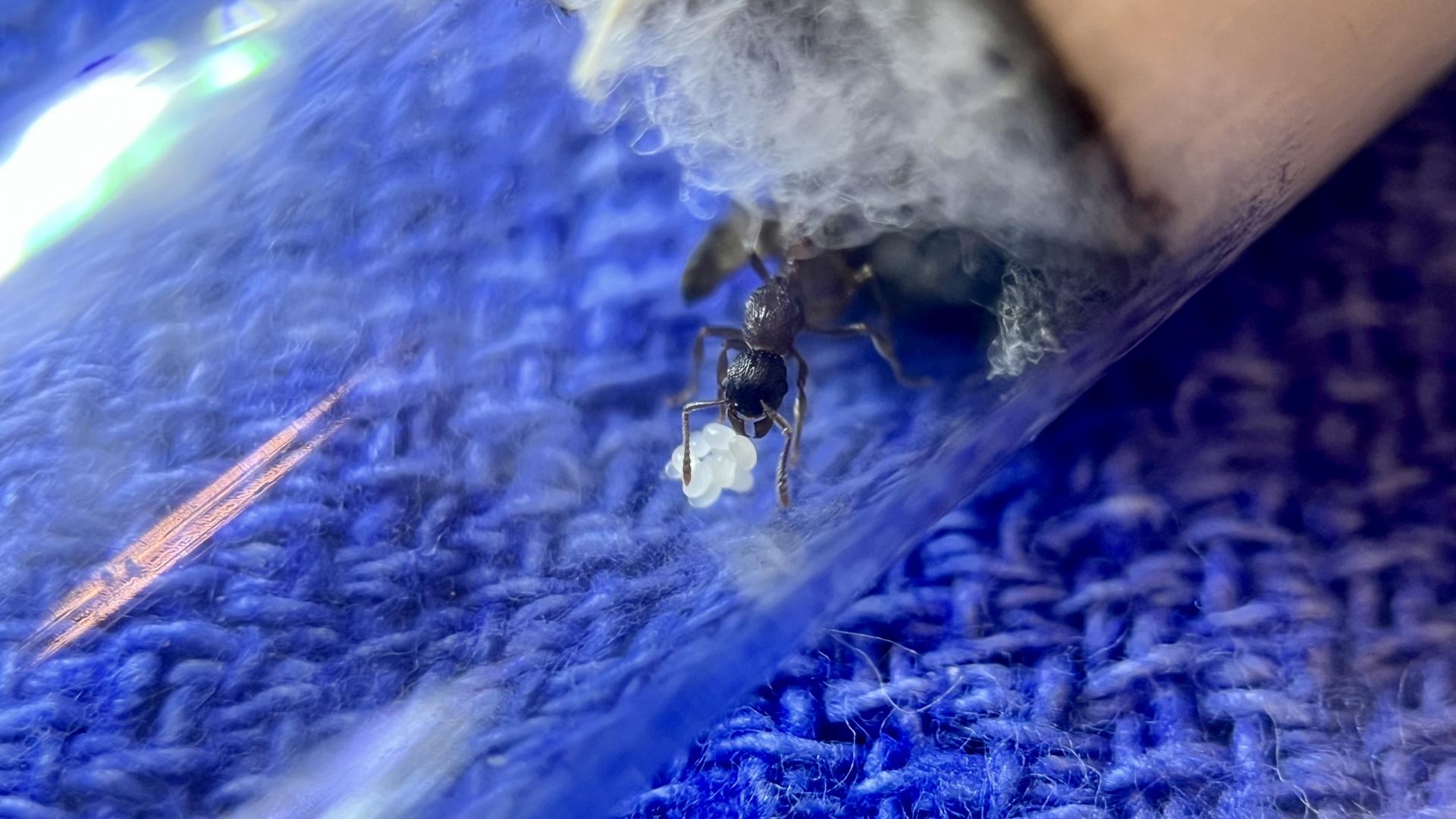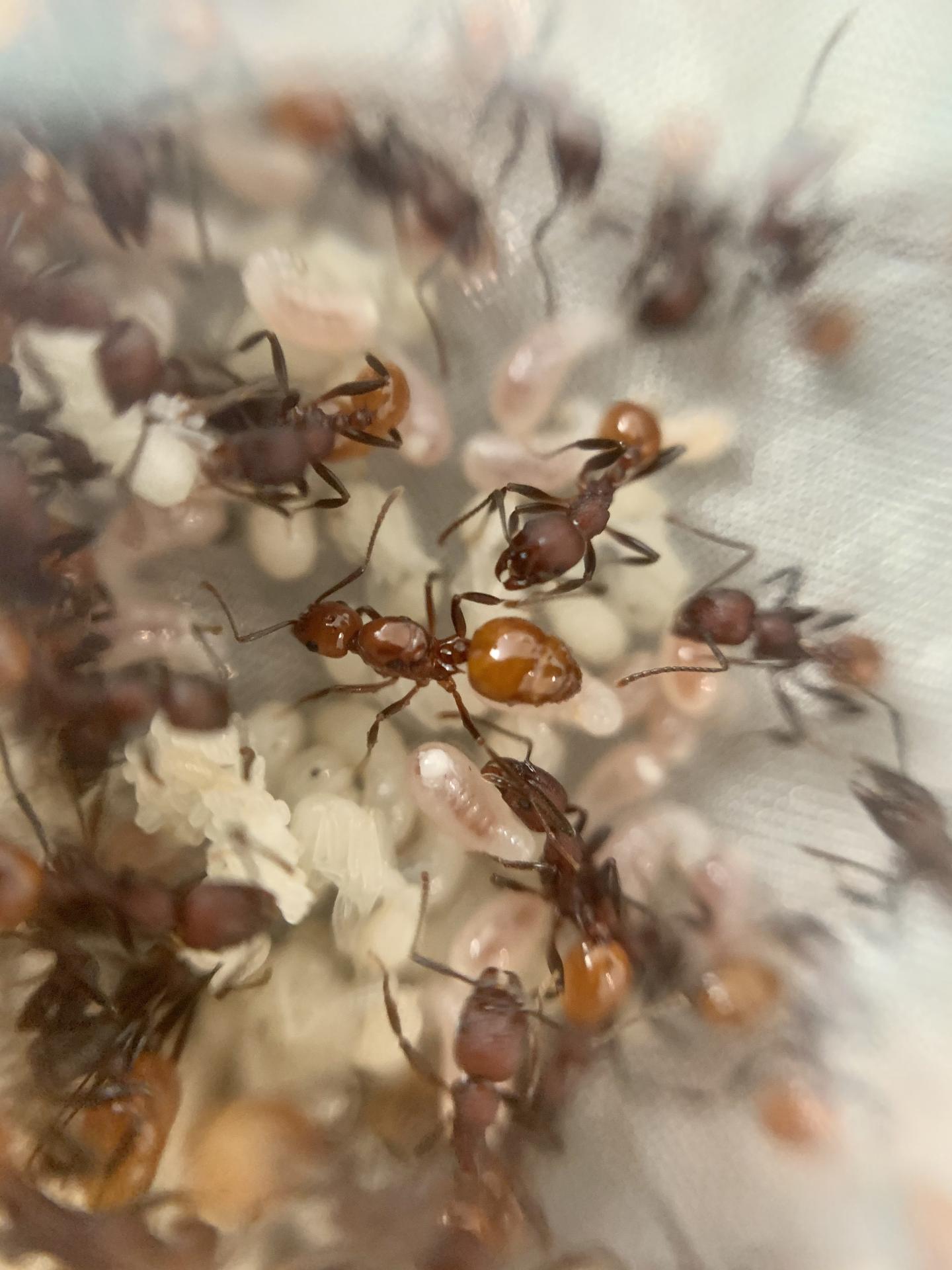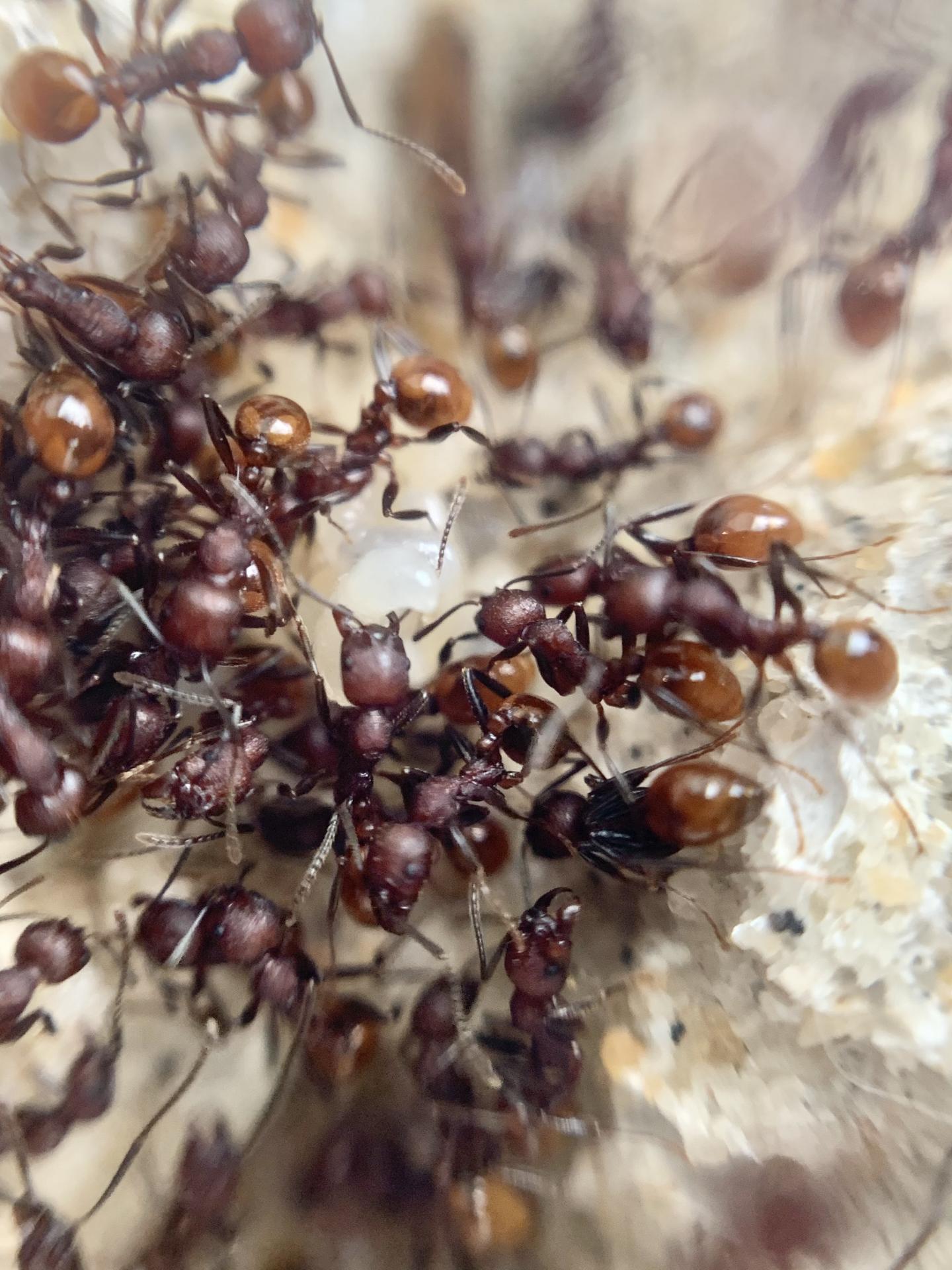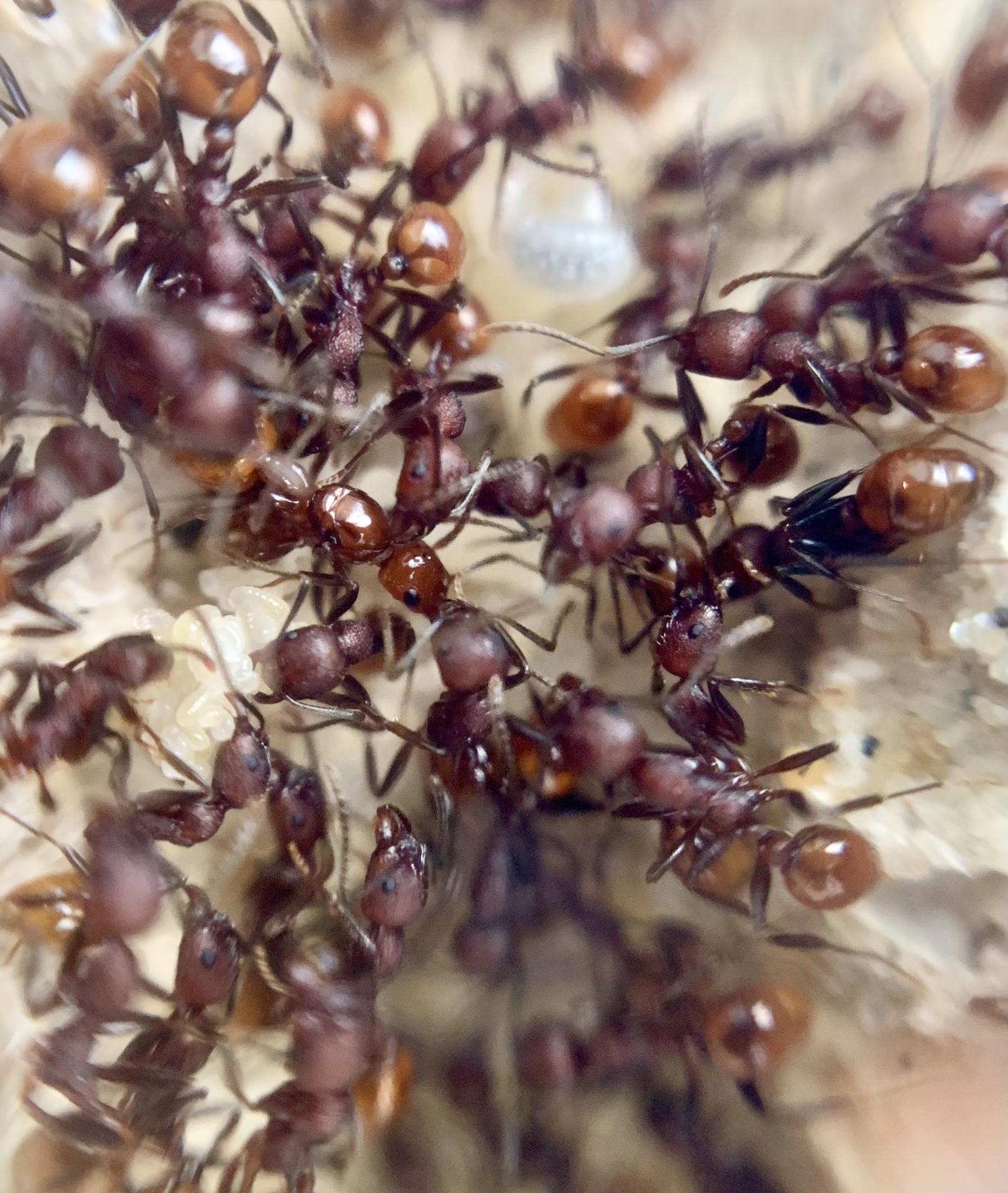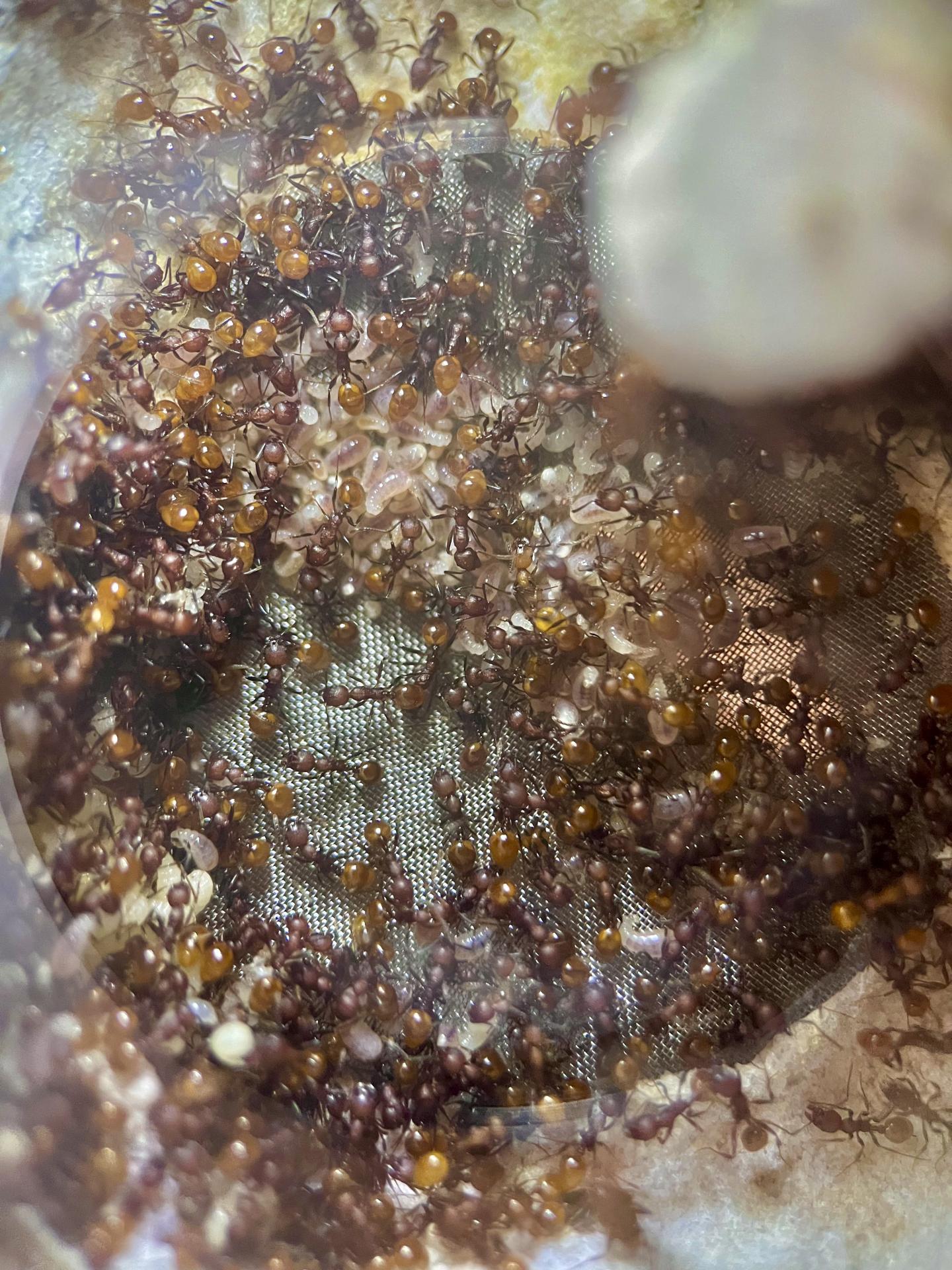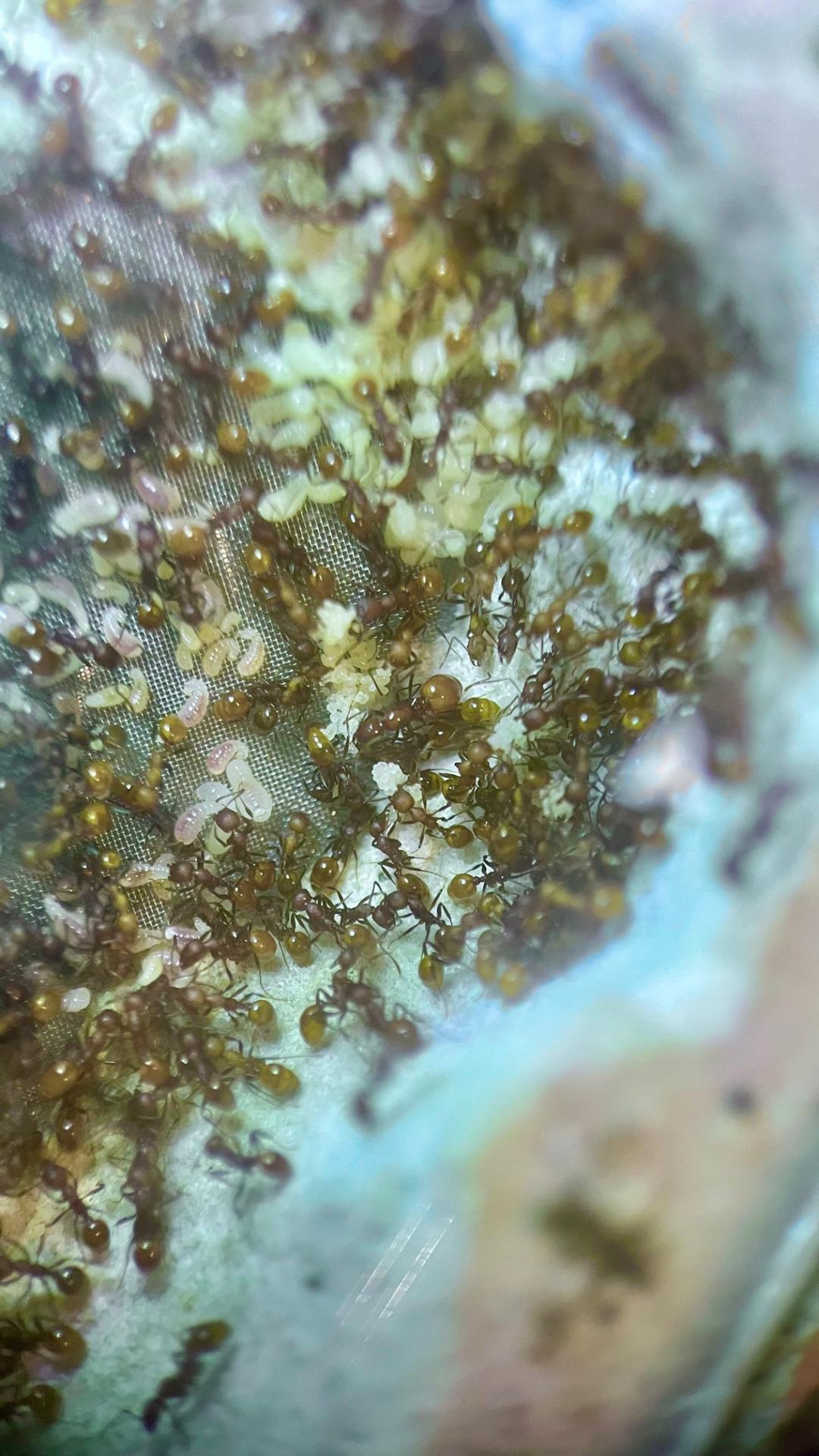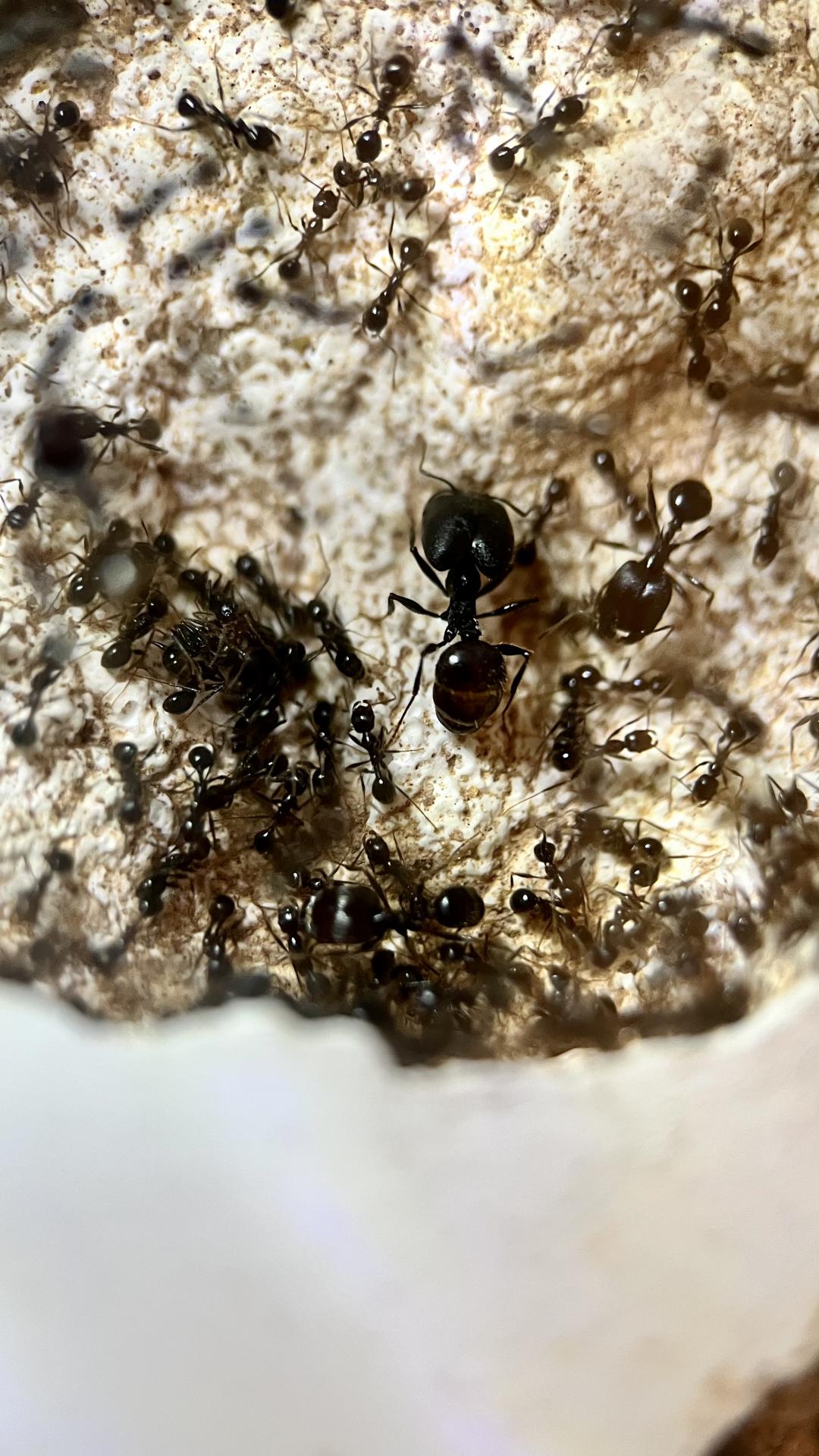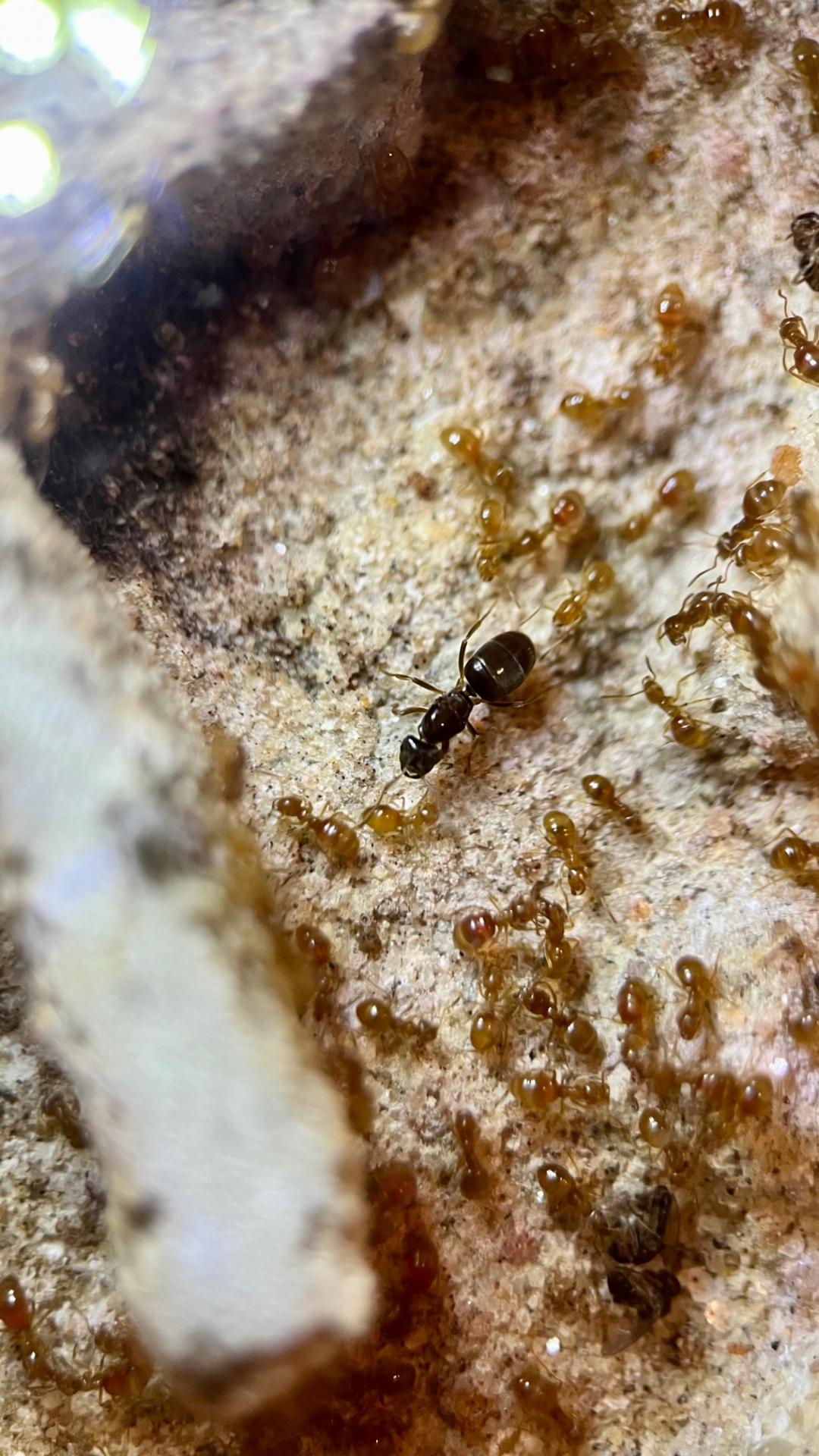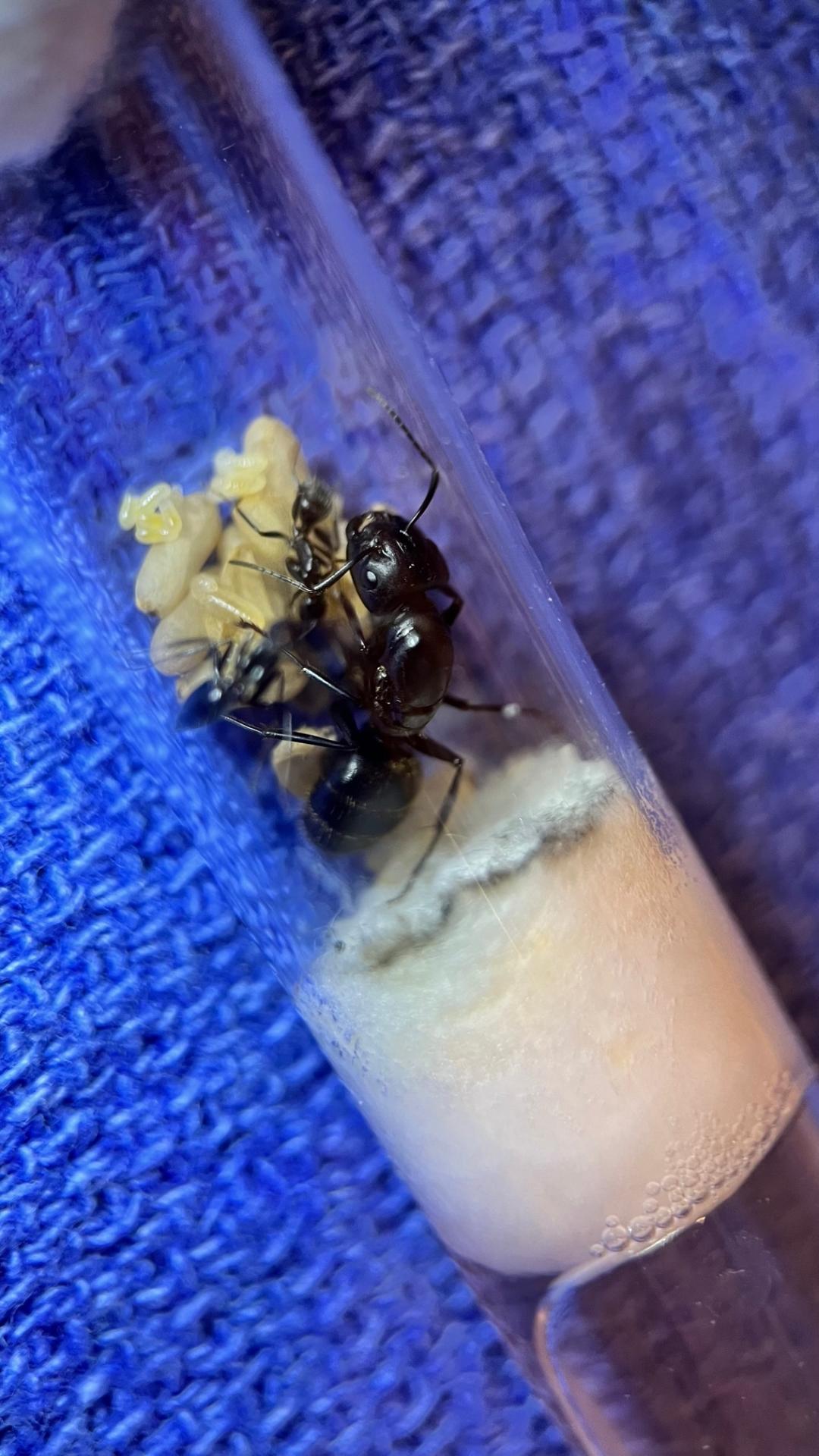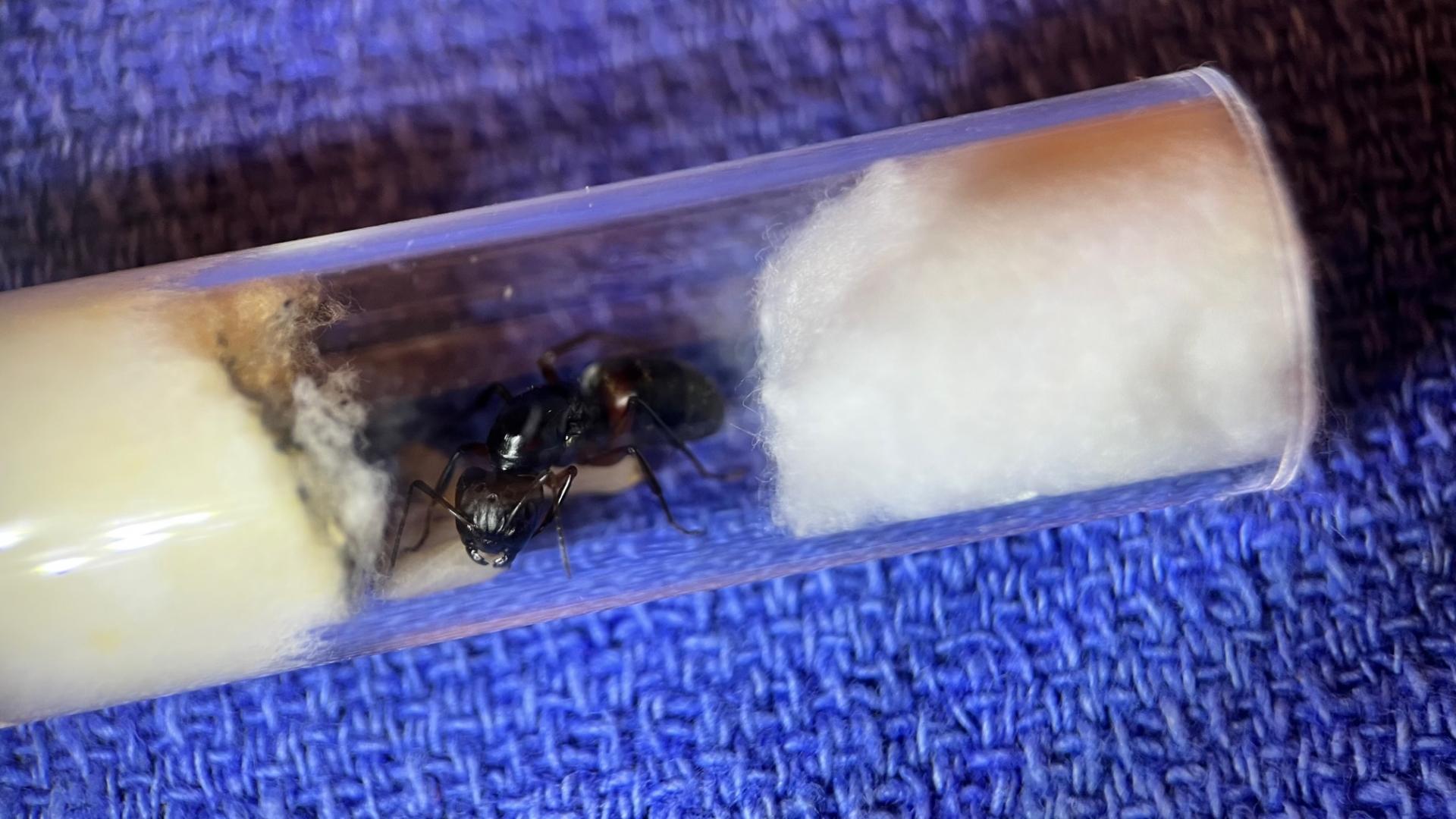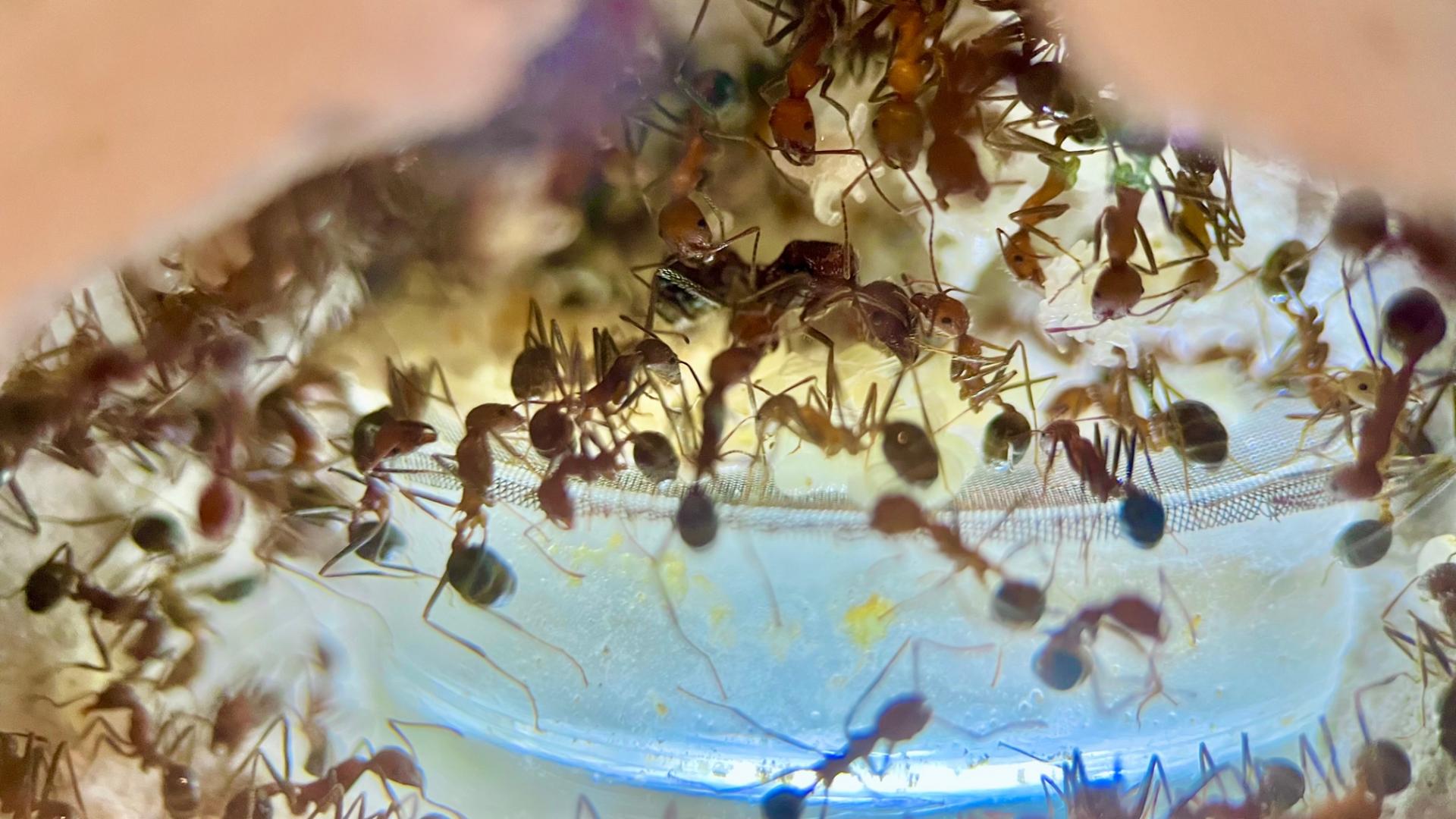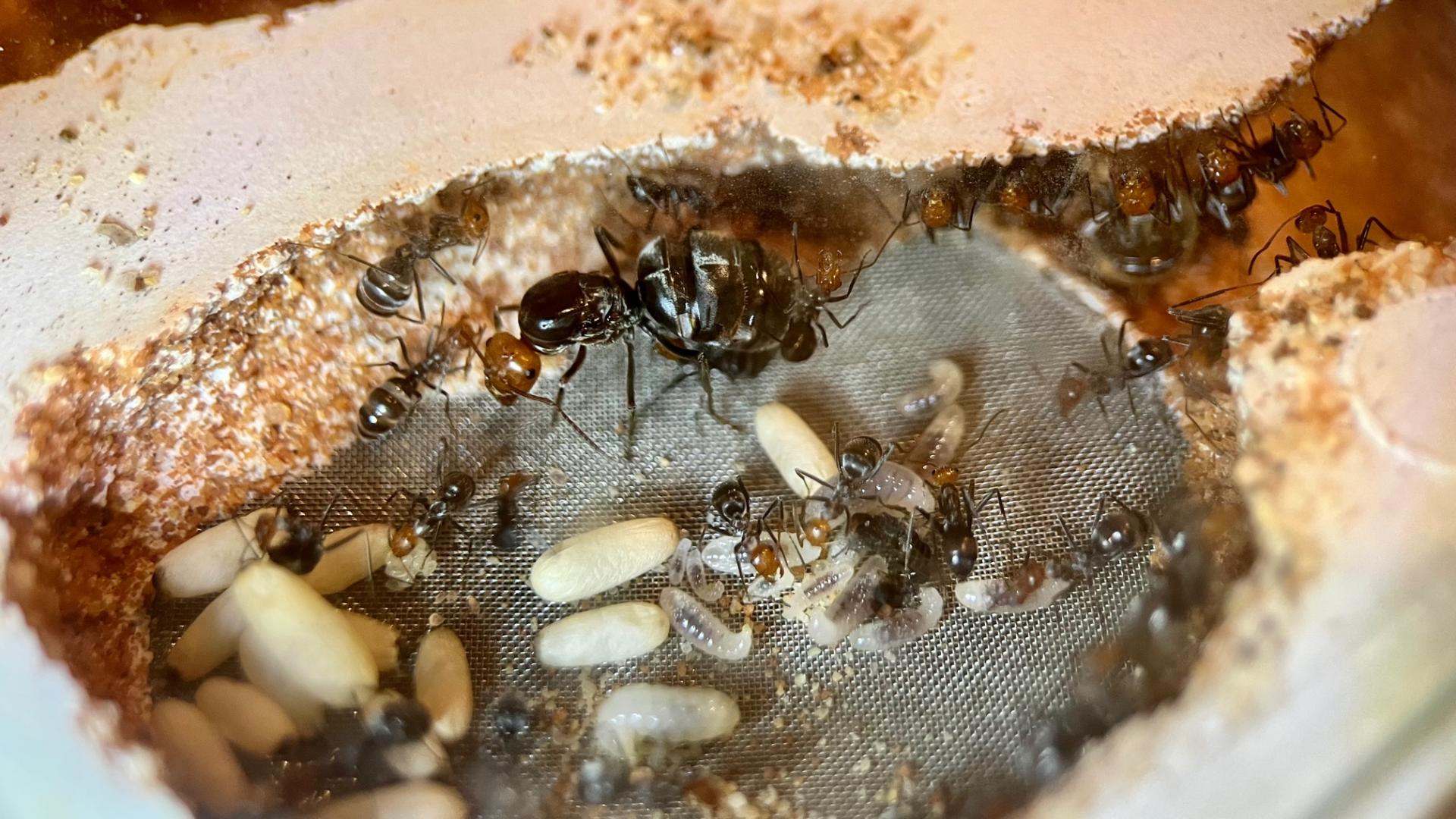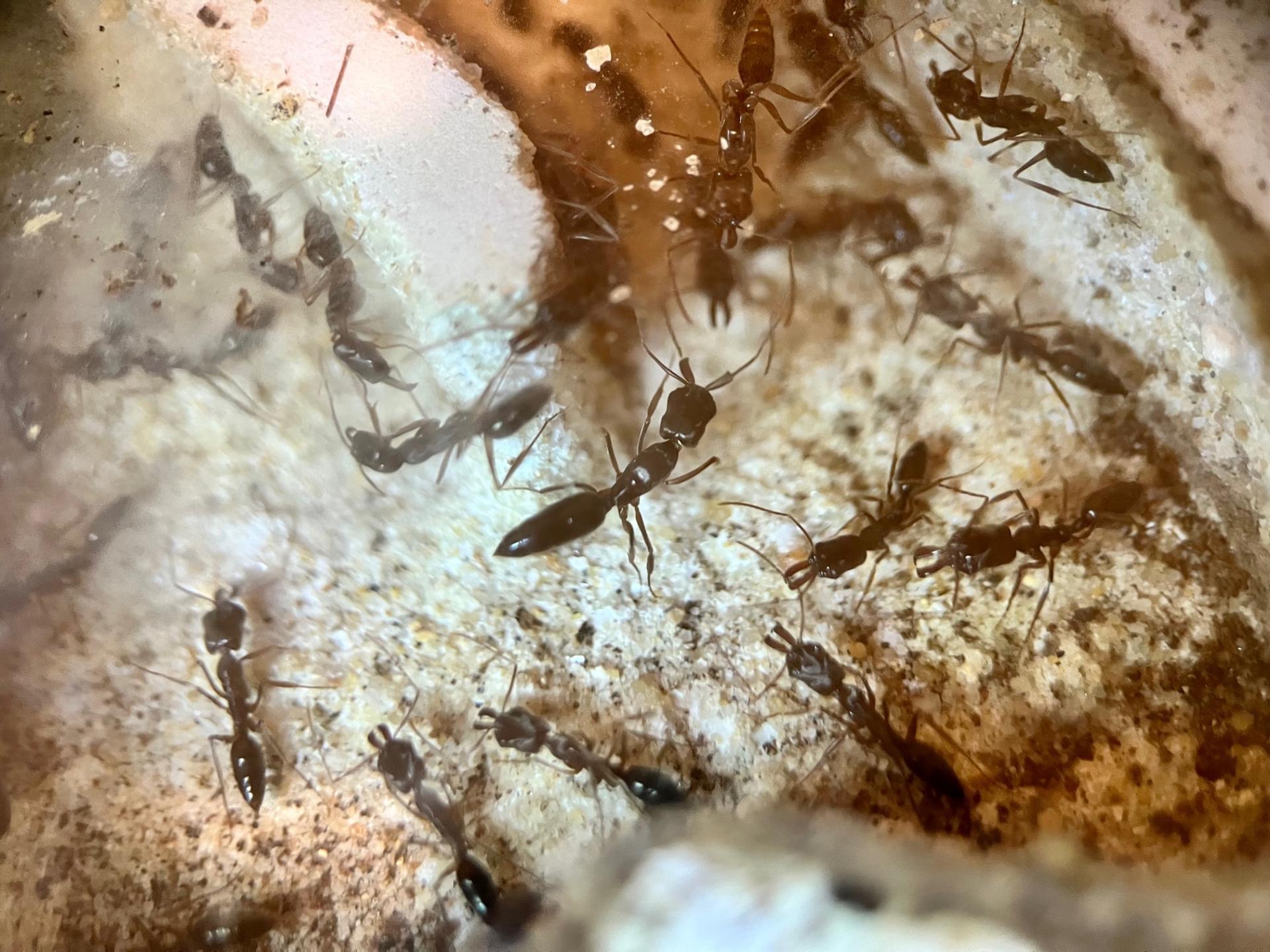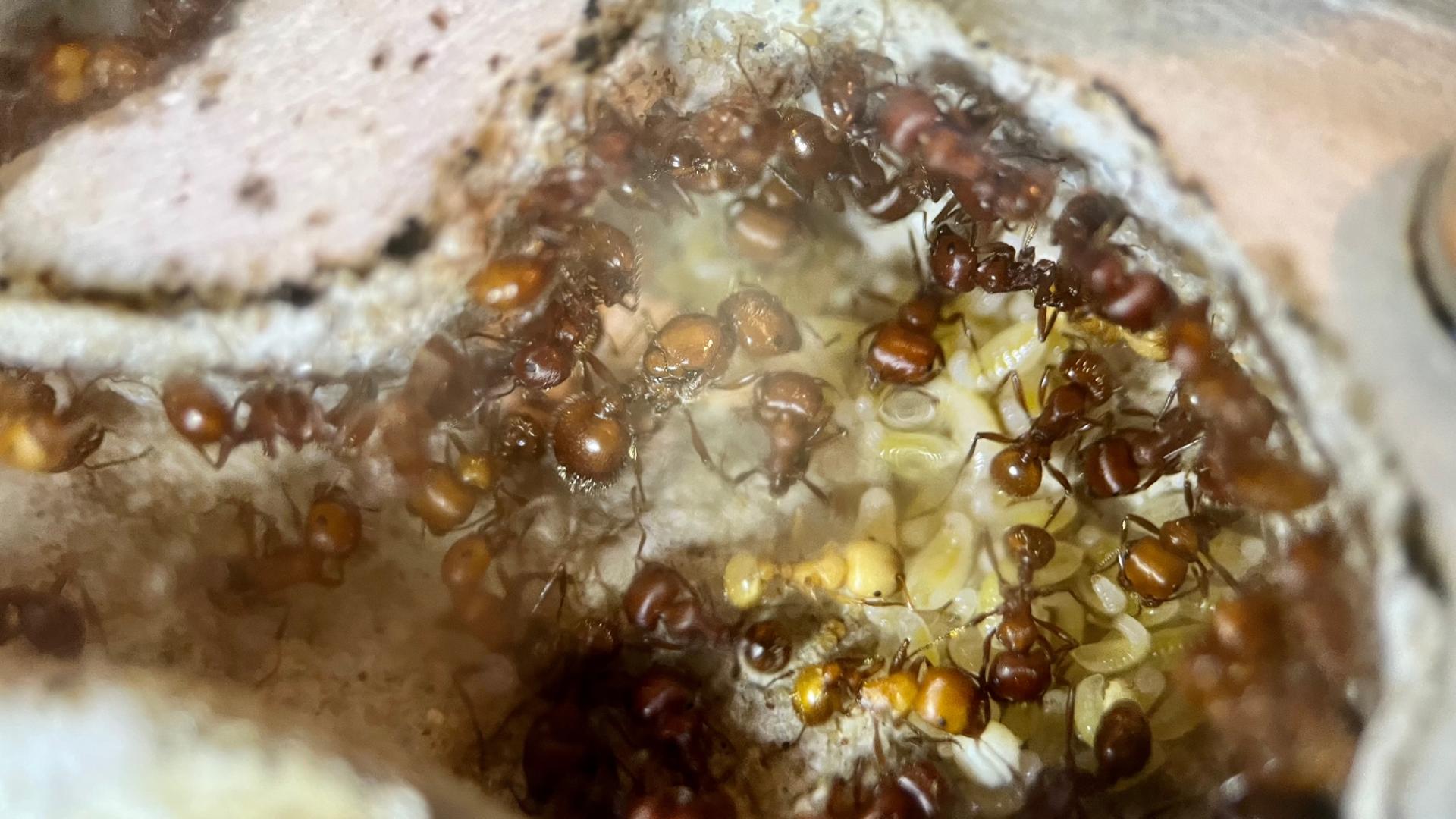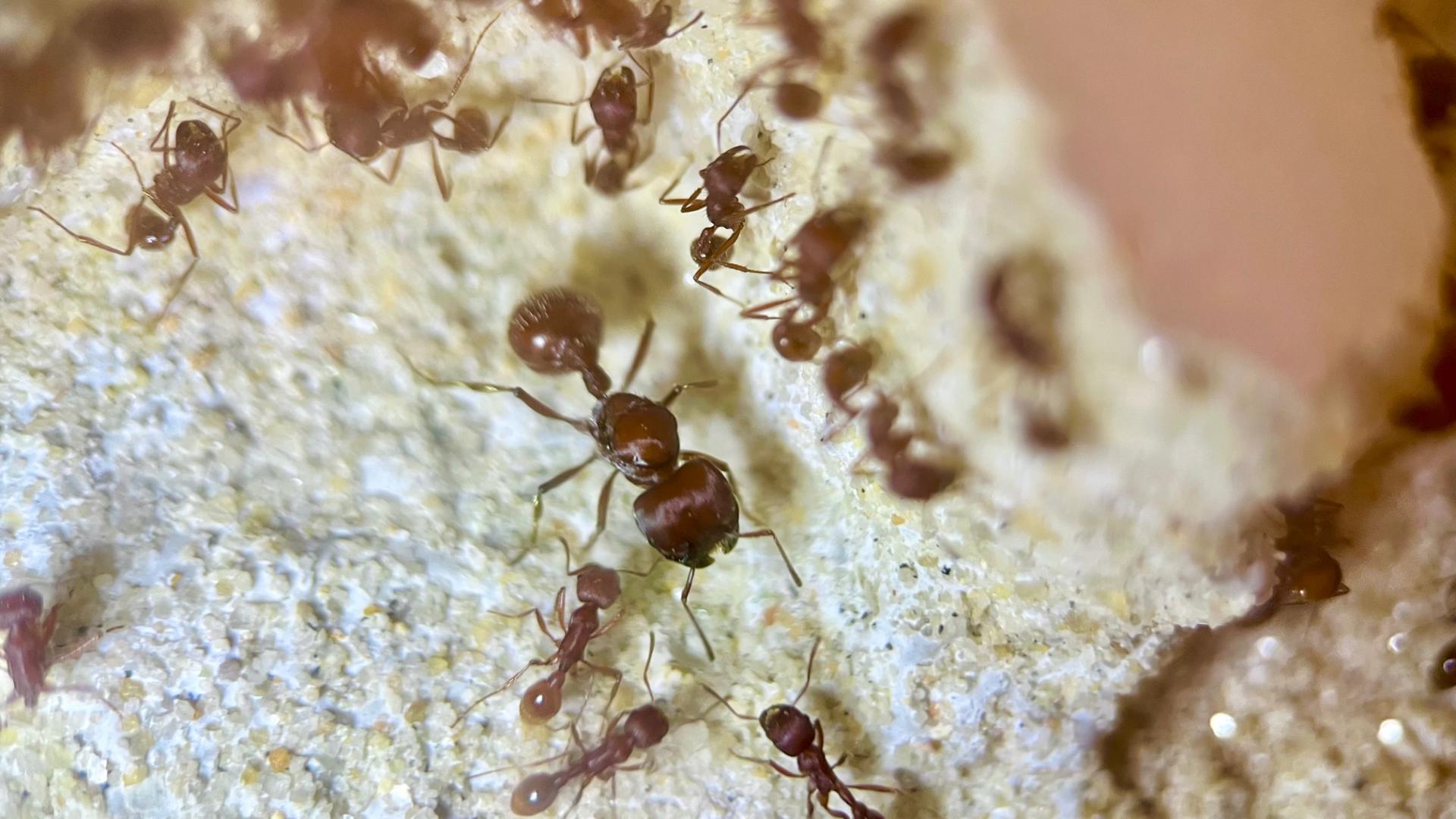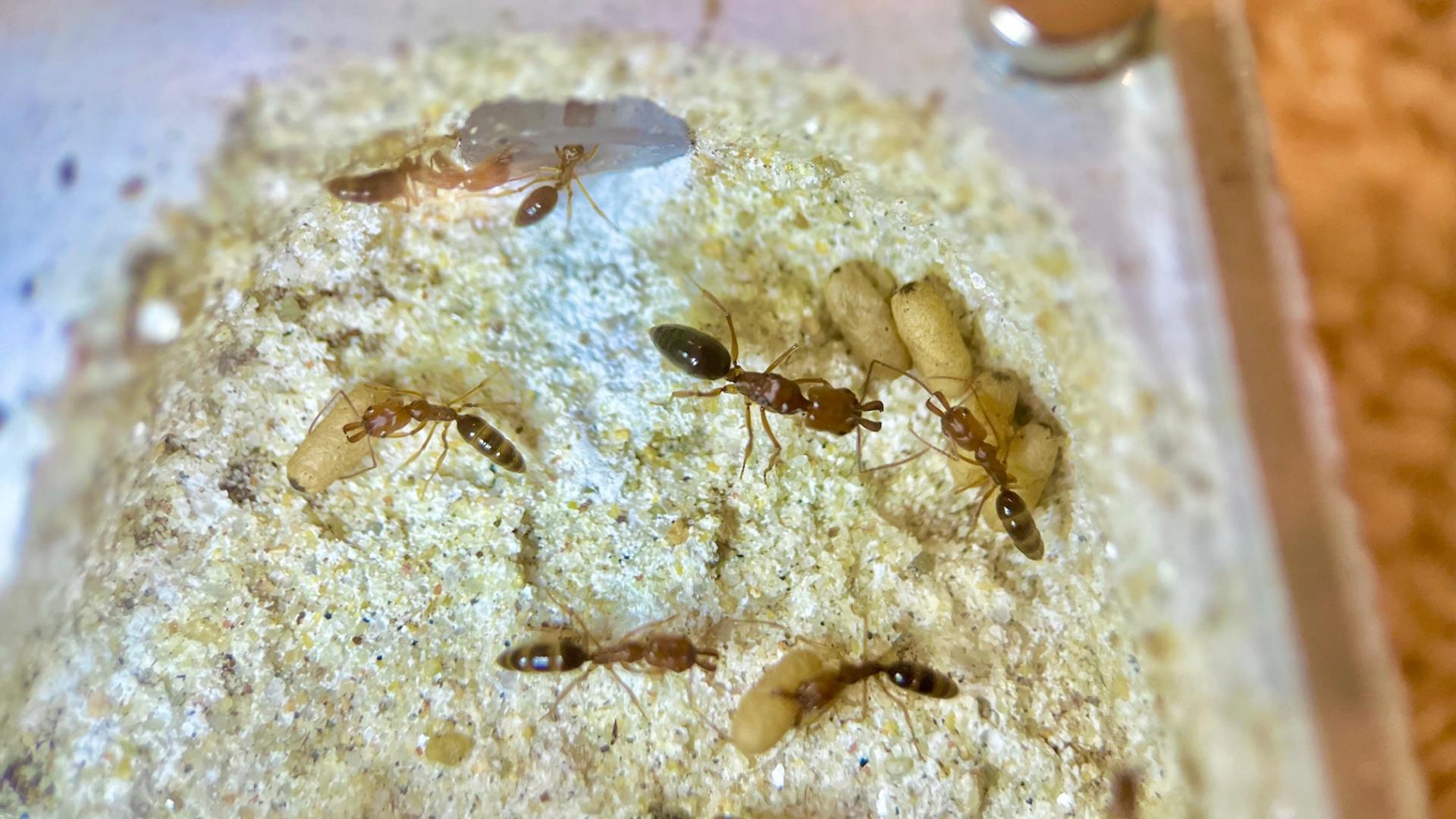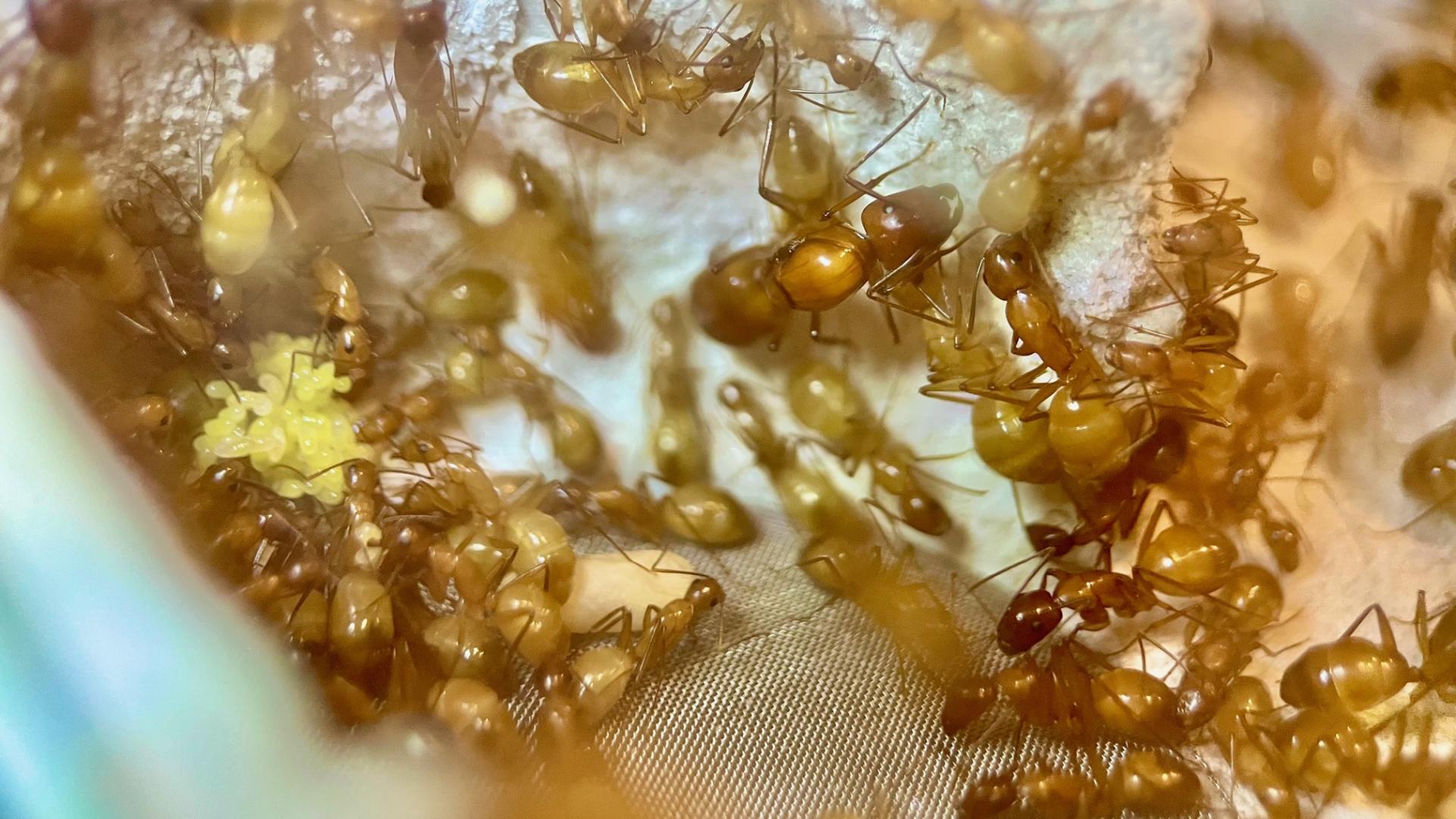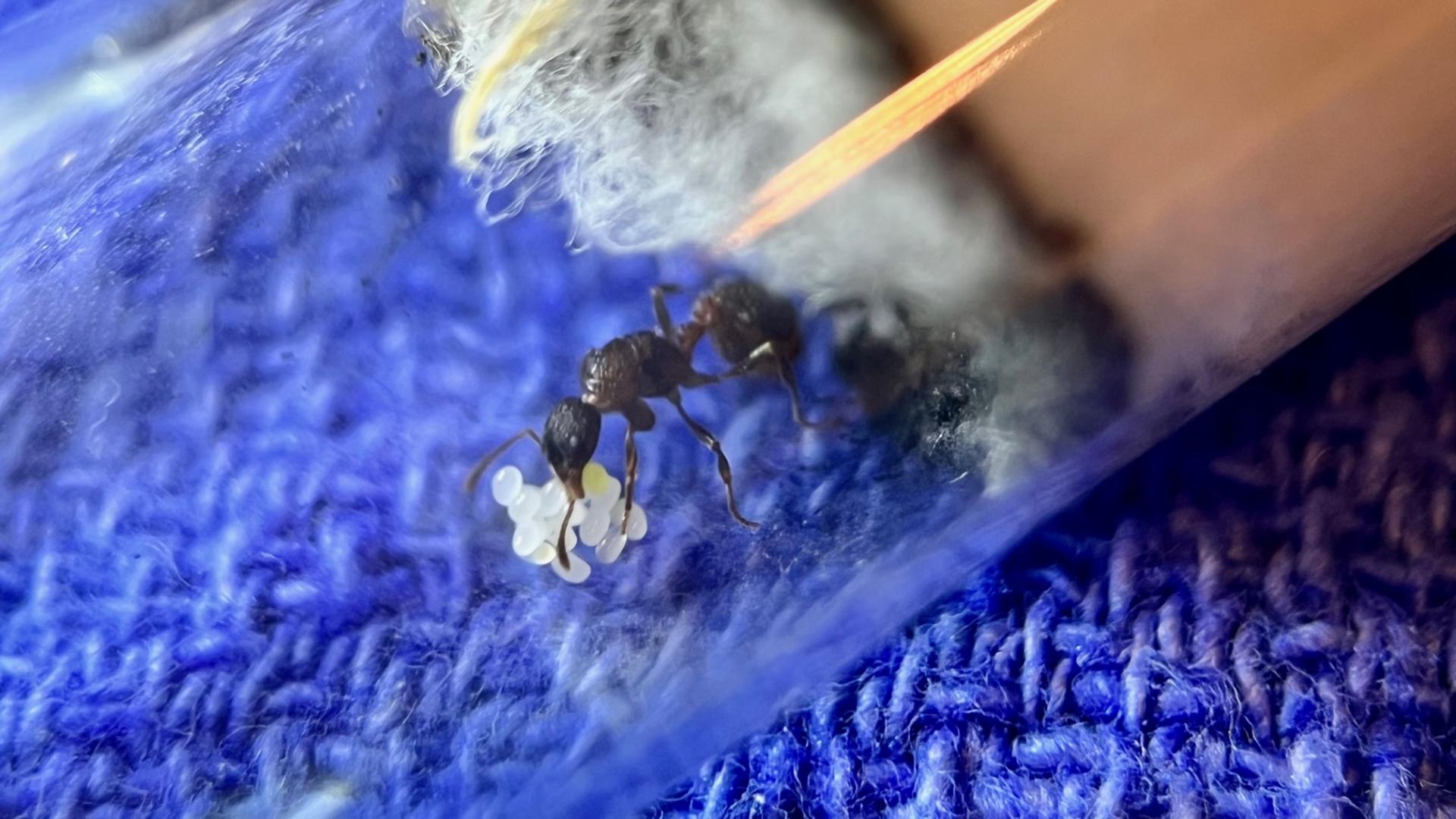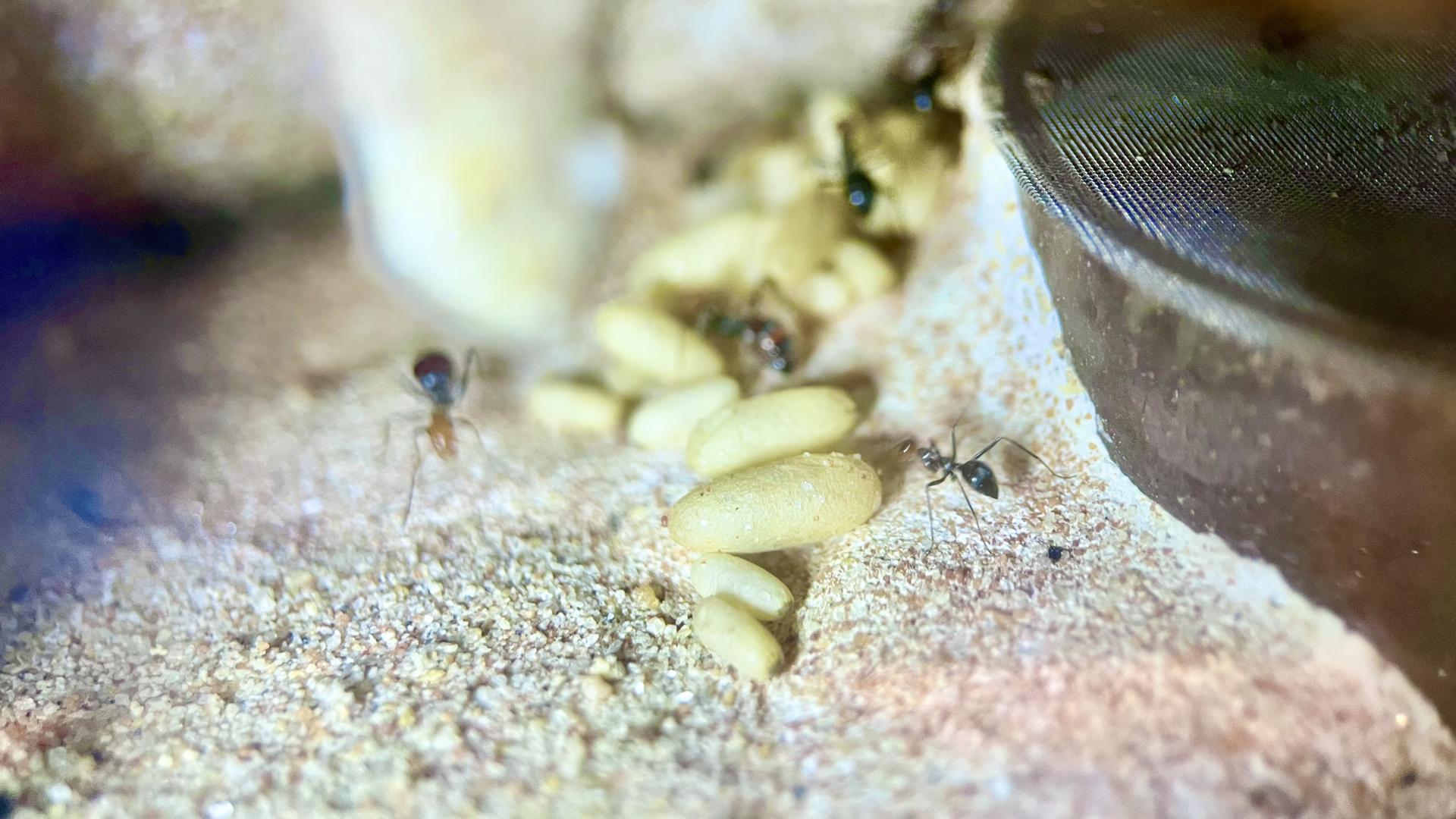- Formiculture.com
- Forums
- Gallery
- Members
- Member Map
- Chat

Kiedeerk's Epic multi-species Ant Keeping Journal
Started By
kiedeerk
, Jul 8 2023 7:15 PM
kiedeerk journal multi-species ant keeping epic
353 replies to this topic
#21
 Offline
-
Posted July 15 2023 - 1:50 PM
Offline
-
Posted July 15 2023 - 1:50 PM
I have my placadops in two different set ups
One is a horizontal nest with ledges so repletes can hang
The other colonies are in traditional cavern style formicariums
One is a horizontal nest with ledges so repletes can hang
The other colonies are in traditional cavern style formicariums
- 100lols likes this
#23
 Offline
-
Posted July 15 2023 - 4:40 PM
Offline
-
Posted July 15 2023 - 4:40 PM
PrettyOdontomachus Clarus are doing great. Numbers are growing nicely with massive brood pile
Close up of brood. All larva of odontomachus sp are spiky
#24
 Offline
-
Posted July 15 2023 - 4:48 PM
Offline
-
Posted July 15 2023 - 4:48 PM
#25
 Offline
-
Posted July 15 2023 - 4:51 PM
Offline
-
Posted July 15 2023 - 4:51 PM
#26
 Offline
-
Posted July 15 2023 - 4:54 PM
Offline
-
Posted July 15 2023 - 4:54 PM
Soo many awesome speices you are so lucky.
#27
 Offline
-
Posted July 15 2023 - 5:07 PM
Offline
-
Posted July 15 2023 - 5:07 PM
very prettyCamponotus castaneus i feel are one brood cycle away from going into diapause
The small larva are the size of those arrested in diapause
#28
 Offline
-
Posted July 16 2023 - 12:05 AM
Offline
-
Posted July 16 2023 - 12:05 AM
Wow, I have never seen spiky larvae before!
Great colonies!
#29
 Offline
-
Posted July 16 2023 - 7:30 PM
Offline
-
Posted July 16 2023 - 7:30 PM
Pogonomyrmex badius
- The only polymorphic species of pogonormyrmex in the USA. They are native to the southeast USA.
- Queens are fully claustral. However they do best in test tube set ups with copious amount of moist sand.
- They require high heat and humidity in order to thrive. Naturalistic set ups with sand are best however I had great success keeping them in my DIY set ups.
- They require heat and humidity gradients (ie areas of high and low heat/humidity). Dryer areas are used as seed storage. Moist and warm areas for brood
- They can be more challenging to found compared to other Pogonomyrmex.
- Their diet include all different kinds of seeds, crushed nuts, fish flakes, and insects
- I did not take too many founding pictures however, this colony is thriving with numbers probably exceeding 1000 at this point.
- Their majors can rival the queen in term of size with larger heads
- SYUTEO, Ernteameise and 100lols like this
#30
 Offline
-
Posted July 21 2023 - 4:22 AM
Offline
-
Posted July 21 2023 - 4:22 AM
#31
 Offline
-
Posted July 21 2023 - 4:34 AM
Offline
-
Posted July 21 2023 - 4:34 AM
Odontomachus Haematodus
- Invasive species to southeastern USA from South america. These are some of the largest trap jaw species in the USA similar in size to O. Desertorum. Queens are over 1.2cm and mature workers are easily over 1cm.
- They have jet black color. Queens are semi claustral and only slightly bigger than mature workers. The only difference in a slightly broader thorax where the wings were.
- Like other trap jaw species, they are consume proteins in forms of soft bodied insects. In captivity, fruit flies, small crickets, termites are their favorite food. Roaches and meal worms are not as good due to their hard exo-skeleton
- Some trap jaws only form small colonies, haematodus have been observed to form large colonies.
- I had this colony for about 2 years, started with solo queen. They reached close to 1000 workers at their peak
Edited by kiedeerk, July 21 2023 - 4:35 AM.
- Karma and SYUTEO like this
#32
 Offline
-
Posted July 21 2023 - 7:08 AM
Offline
-
Posted July 21 2023 - 7:08 AM
How’s the yellow form nearcticus
#33
 Offline
-
Posted July 21 2023 - 7:29 AM
Offline
-
Posted July 21 2023 - 7:29 AM
#34
 Offline
-
Posted July 21 2023 - 8:54 AM
Offline
-
Posted July 21 2023 - 8:54 AM
that’s unfortunate, given how pretty they are. Hopefully you can find one next year.How’s the yellow form nearcticus
Slow progress. This is because it’s a failed queen I had to feed to get her to lay.
Fully claustral queens don’t usually make it once they lose their nanitics
Myrmica queen laid more eggs
#35
 Offline
-
Posted July 22 2023 - 6:22 AM
Offline
-
Posted July 22 2023 - 6:22 AM
Aphaenogaster tennessiensis
- The only parasitic aphaenogaster species in my region. They mainly parasitize Aphaenogaster rudis colonies.
- The queen is bright orange and very small. Her workers are similar in size to rudis/fulva workers distinguished by their long dorsal spines.
- They are abundant although can be localized in certain areas. They like to nest in dead/dry trees, under bark.
- Once accepted by the rudis workers, queen will lay eggs and produce her own biological workers. After that, the care in the same with any other aphaenogaster species
- Diet consist mainly of insects, sugar water is not needed although can be supplemented. Seeds/nuts can be used as well as fish flakes.
- Ernteameise and 100lols like this
#36
 Offline
-
Posted July 25 2023 - 4:23 AM
Offline
-
Posted July 25 2023 - 4:23 AM
#37
 Offline
-
Posted July 27 2023 - 2:37 PM
Offline
-
Posted July 27 2023 - 2:37 PM
#38
 Offline
-
Posted July 28 2023 - 9:41 AM
Offline
-
Posted July 28 2023 - 9:41 AM
Beautiful pictures
#39
 Offline
-
Posted July 28 2023 - 9:50 AM
Offline
-
Posted July 28 2023 - 9:50 AM
amazing how one organism can create an empire in its lifespan.The royalties of my colonies. The most important member of a colony is the queen.
Edited by Jonathan5608, July 28 2023 - 9:51 AM.
#40
 Offline
-
Posted July 29 2023 - 2:30 PM
Offline
-
Posted July 29 2023 - 2:30 PM
Also tagged with one or more of these keywords: kiedeerk, journal, multi-species, ant keeping, epic
Ant Keeping →
Ant Keeping Journals →
cooIboyJ's Nylanderia vividula journalStarted by cooIboyJ , Sep 6 2025 |
|
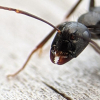
|
||
Ant Keeping →
Ant Keeping Journals →
Ants_Dakota's Camponotus sp. JournalStarted by Ants_Dakota , Jul 13 2025 |
|

|
||
Ant Keeping →
Ant Keeping Journals →
Strickys Formica JournalStarted by stricky_ants , Jun 21 2025 |
|
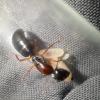
|
||
Ant Keeping →
Ant Keeping Journals →
AntTx's Camponotus sansabeanus JournalStarted by AntsTx , Jun 17 2025 |
|
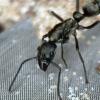
|
||
Ant Keeping →
Ant Keeping Journals →
The Bark Battalion (Liometopum occidentale)Started by AntsGodzilla , Jun 3 2025 |
|
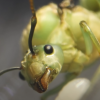
|
0 user(s) are reading this topic
0 members, 0 guests, 0 anonymous users


